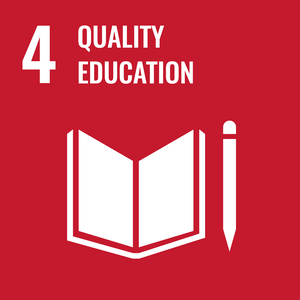
Our Projects
People. Planet. Possibilities.
Areas of Focus
-
All We Can Save Project
View ProjectAll We Can Save Project
- Sustainable, Equitable Economies
- Healthy Planet & People
- Resilient Communities
- Secure Natural Resources
-

Service Area
United States-
Website
All We Can Save Project
The Challenge: Stepping back to consider root causes, it’s clear that there’s a leadership crisis at the heart of the climate crisis.
Too many people in positions of power focus on short-term profit, prestige, and sustaining the status quo — at the expense of a livable planet.
Many of those awake to the climate crisis stand on the sidelines. In the US, a majority of Americans say they are worried, but only 8% are active in some way. More are willing but unsure how best to engage.
At the same time, conventional climate leadership has centered too narrow a set of voices, ideas, and contributions. The drain of the work also takes its toll, and burnout is a real challenge.
Climate transformation hinges on a range of solutions — from clean energy to effective policy to broad mobilization. All of it hinges on people. But what it takes to grow and sustain leaderful participation has too often been an afterthought.
What can be done:
We believe the antidote to this leadership crisis is a broad leadership upwelling, with many more people linking arms to grow a life-giving future for everyone. Supporting that upwelling is what we’re here to do.
A leaderful climate community is abundant. It’s abundant in people, diversity, superpowers, courage, action, and collaboration. It honors that each one of us is a node of possibility for climate healing.
We believe the following eight dynamics are necessary for deep, sustained, and courageous climate engagement.
- I understand climate truth, just solutions & leverage points for change
- I’m able to work with climate emotions & access healing / rest
- I can see myself in the unfolding, collective climate story
- I feel connected to Earth & kindred community
- I hold deep motivations to foster a just, life-giving future
- I have a sense of possibility, authentic power & joy in the work
- I find footholds for meaningful action & collaboration
- I have clarity around my contribution, while embracing its evolution
How The All We Can Save Project is meeting the challenge:
Everything we do is designed around growing the above eight dynamics. We use three core tools:
- Narrative change — fostering public narrative shift around climate truth, courage, and solutions through creative communication (e.g., the bestselling anthology All We Can Save).
- Community building — equipping people to build climate community and move towards action together (e.g., our self-led small group model All We Can Save Circles).
- Deep learning — offering educational programs and resources to deepen understanding and nurture participation (e.g., our Climate Wayfinding program for gaining clarity on your climate journey)
And in all of this, we work to tend the emotional-spiritual root from which climate leadership grows.
Our team is a group of strategists, creatives, teachers, and community-builders living in Atlanta and New York.
This project aligns with the following Sustainable Development Goals
-
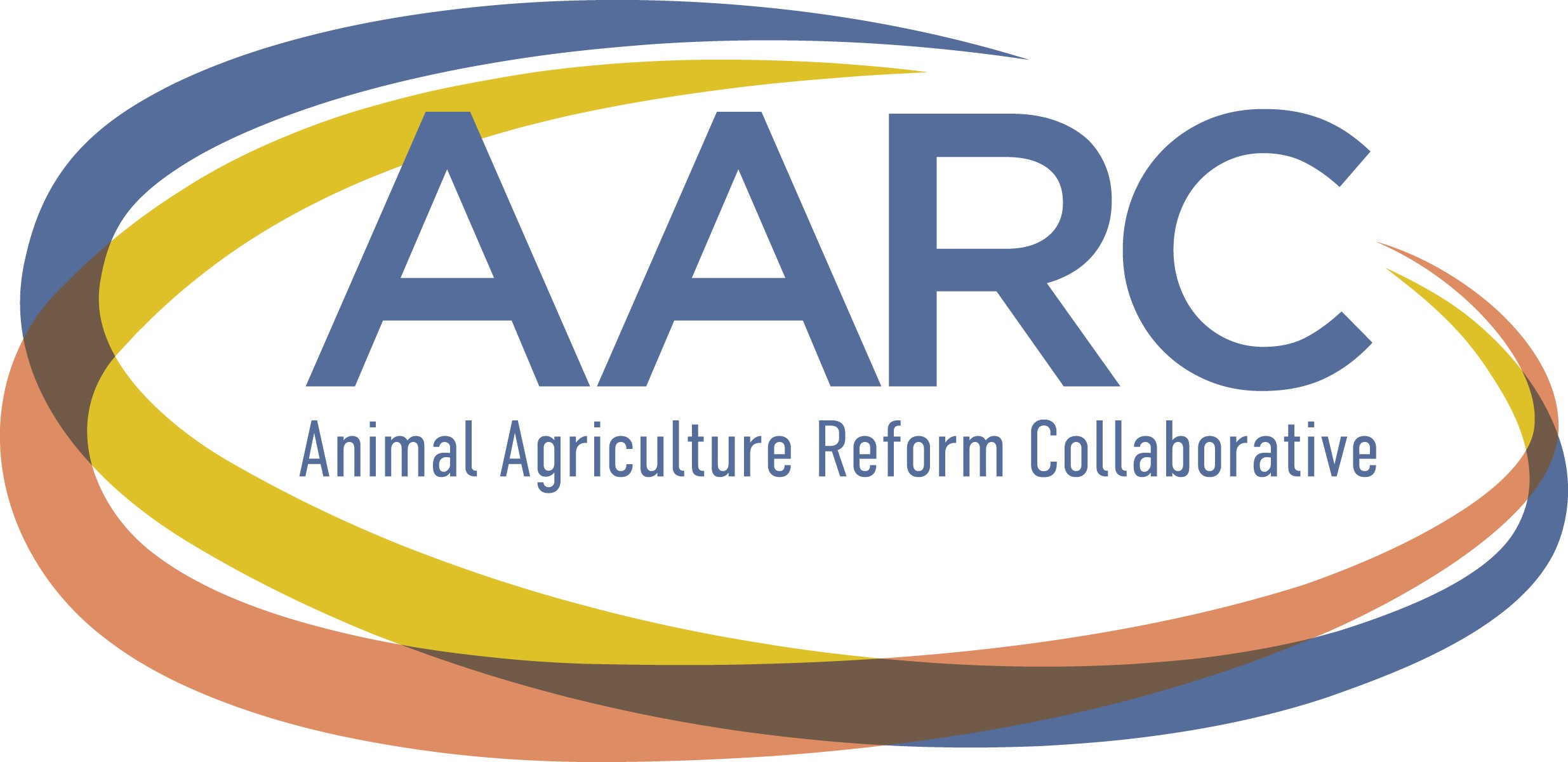
Animal Agriculture Reform Collaborative
View ProjectAnimal Agriculture Reform Collaborative
- Sustainable, Equitable Economies
- Healthy Planet & People
- Secure Natural Resources
-
Animal Agriculture Reform Collaborative
The challenge:
The impacts of extreme industrialization in food and agriculture is nowhere more evident – or harmful – than in the animal agriculture sector. The resulting U.S. marketplace domination of factory farms is a primary driver of myriad social, economic, and environmental problems, and further cements political and economic disconnections between urban and rural populations. This industrialized system is powered by large-scale corporate enterprises who systematically prioritize shareholder profits over local farmers, sustainability, stewardship, and animal welfare.

What can be done?
By acting collectively, we can create a food and animal agriculture system that is just, sustainable, accountable to people and that will advance:
- Accessible, affordable, healthy food for all
- Safe, living wage jobs that support racial and economic equity
- Thriving rural communities, including farmer independence and local control
- High animal welfare practices coupled with public health protection
- Strong local stewardship of rangelands, water and more.
How AARC is meeting the challenge:
Animal Agriculture Reform Collaborative (AARC) is a movement alignment hub where organizations from the environmental, independent farmer, sustainable food, labor, civil rights, and animal welfare movements work together to build a broad, powerful base across the country. With this shared vision of a just, sustainable animal agriculture system, these movements can jointly challenge corporate control of the food system and advocate for better U.S.-based agricultural policies.
This project aligns with the following Sustainable Development Goals
-
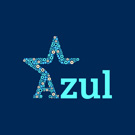
Azul
View ProjectAzul
- Healthy Planet & People
- Secure Natural Resources
-
Azul
The challenge:
Although the Latinx population in the U.S. reached nearly 58 million in 2016 and has been a key driver of population growth, the mainstream marine conservation movement has failed to keep pace with the country’s shifting demographics and to meaningfully engage the Latinx population in ocean and coastal advocacy. Together with other minority communities, Latinx communities – particularly those in Coastal California – are more vulnerable to health disparities and risks to their livelihoods due to impacts from climate change and sea level rise.

What can be done?
The Latinx community is diverse – both culturally and geographically – yet the community still shares common beliefs and values, including a commitment to their communities. In California, where Latinxs form a plurality that outnumbers non-Hispanic whites, the environment is a key concern, and preserving the coasts and oceans is a key element of a healthy environment. Engaging Latinx voters in California can strengthen the voice of Latinx communities, support strong environmental policies, and help preserve and protect our oceans and coastlines.
How Azul is meeting the challenge:
Azul is the only ocean conservation organization in the U.S. that focuses specifically on working within Latinx communities. Using culturally relevant communication techniques, Azul leverages both localized grassroots and “grass tops” strategies to engage Latinxs as long term conservationists with a pragmatic and common sense approach to resources use and protection. Azul has been instrumental in driving several California-based policy “wins” including banning of single use plastic bags, banning the sale and possession of shark fins, and creating legal remedies that allow fining private property owners who illegally block public access to California’s beaches.
This project aligns with the following Sustainable Development Goals
-
-
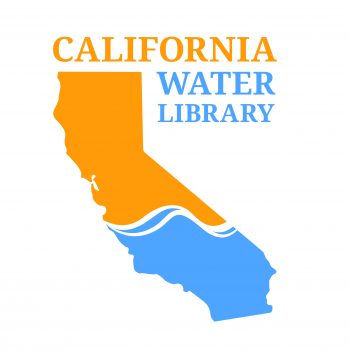
California Water Library
View ProjectCalifornia Water Library
- Resilient Communities
- Secure Natural Resources
-
California Water Library
The challenge:
Although water availability, use and access is arguably one of California’s most pressing and often controversial public issues, finding unbiased information on California’s water issues can be frustrating and time-consuming, even for those working in the water industry. Thousands of critical and timely reports, articles, white papers and legal rulings about California’s water are buried in an assortment of disjointed websites maintained by public resource agencies, nonprofit organizations, educational institutions, research centers, and others.

What can be done?
Provide unbiased, consolidated online access to resources about California Water so that anyone can access information needed to make informed decisions about the State’s most precious natural resource.
How California Water Library is meeting the challenge:
The California Water Library provides streamlined access to a constantly curated collection of reports, articles, essays, fact sheets, research, white papers, and documents generated by state and federal agencies, nonprofits, experts, and others. Targeted search tools enable users to find documents based on author, publisher, date, title, keyword, and more.
This project aligns with the following Sustainable Development Goals
-
-
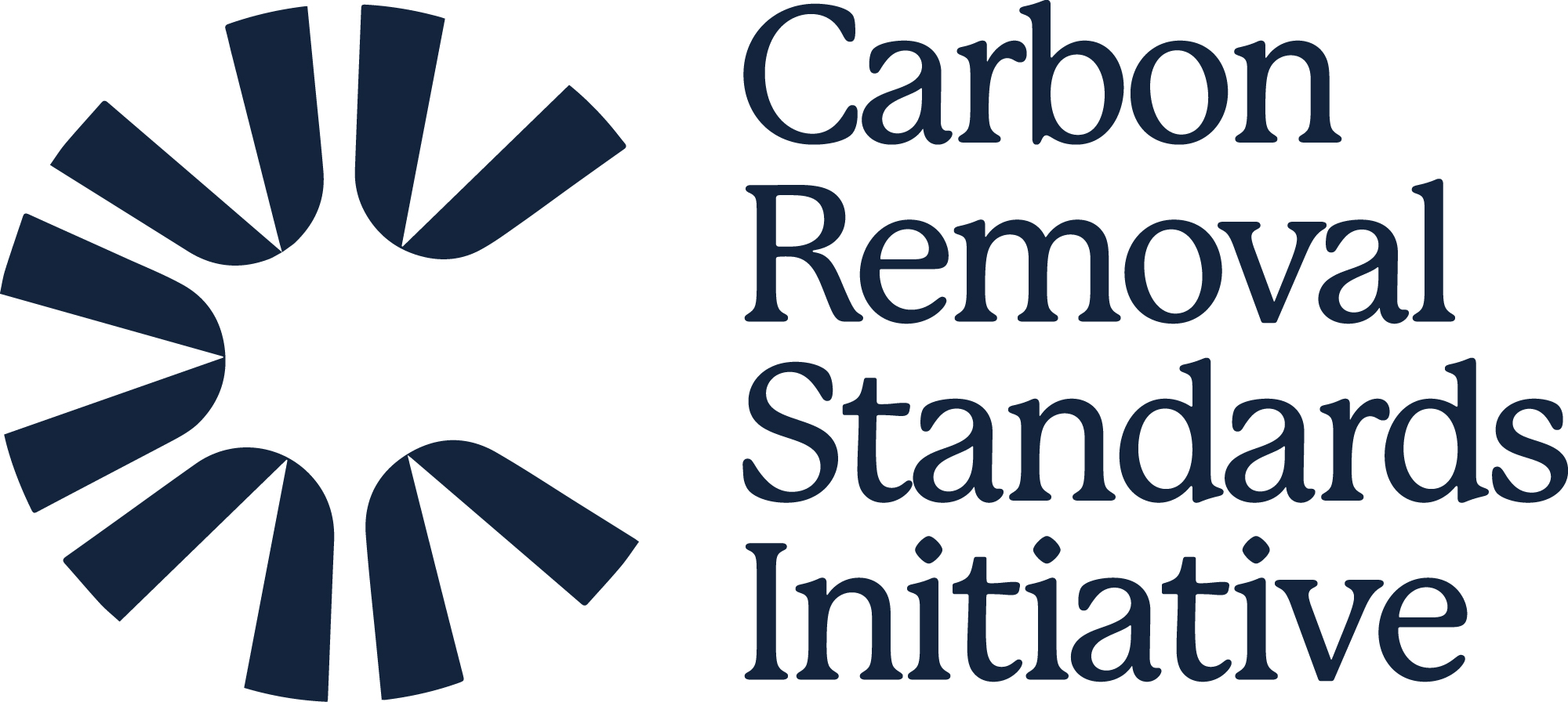
Carbon Removal Standards Initiative
View ProjectCarbon Removal Standards Initiative
- Healthy Planet & People
- Secure Natural Resources
-
Carbon Removal Standards Initiative
The Challenge:
Carbon removal is essential for addressing climate change, but without strong standards, we won’t know when carbon has truly been removed. Done well, carbon removal can help us avoid the worst harms of warming and be a necessary complement to decarbonization. However, without trust and accountability, the field will stall and not reach its climate potential.
Right now, the rules governing carbon removal are being written. But financial incentives often conflict with the public good—companies looking to profit have every reason to push for weak standards. Meanwhile, policymakers, regulators, and NGOs are navigating a complex and rapidly evolving field—often without access to the independent, science-based expertise needed to ensure effective standards. Without clear, science-based policies, we risk investing in solutions that don’t work or, worse, cause new harm.
What Can Be Done:
For carbon removal to be a legitimate climate solution, it must be governed by science and accountability. Policies should answer key questions: How much CO₂ is actually being removed? For how long? Who benefits, and who bears the risks? Without clear answers, carbon removal can’t be effective.
This is bigger than technology—it’s about trust. Carbon removal must serve the public good, not just private interests. That means preventing greenwashing, ensuring communities have a voice, and embedding climate justice at the core of policy decisions.
Policymakers and regulators will play a central role in shaping the future of carbon removal, but they need independent, science-backed expertise to get it right.
How the Carbon Removal Standards Initiative is Meeting the Challenge:
The Carbon Removal Standards Initiative (CRSI) ensures that carbon removal is effective, equitable, and held to the highest standards.
CRSI provides technical guidance to policymakers, NGOs, and regulators to shape strong carbon removal policies that are transparent, measurable, and accountable. Our work focuses on:
- Developing rigorous quantification standards to measure carbon removal accurately.
- Tailoring policies across agriculture, heavy industry, and waste management to maximize climate and other benefits.
- Bridging the gap between scientists, policymakers, and communities to ensure carbon removal serves the public good.
CRSI is keenly aware that carbon removal policy in the coming years will determine whether this industry becomes another missed opportunity or delivers real climate benefits. We’re making sure those policies are built for impact—doing our part to realize a carbon removal industry that is transparent, accountable, and worthy of public investment.
This project aligns with the following Sustainable Development Goals
-

cChange
View ProjectcChange
- Sustainable, Equitable Economies
- Healthy Planet & People
- Resilient Communities
- Secure Natural Resources
-
cChange
The challenge:
The Pacific Ocean is the largest ecosystem in the world, covering almost half the globe’s sea surface. 22 Pacific Island countries and territories govern approximately one-third of the Pacific. Although the ocean is the major economic, social and cultural lifeline for 10 million Pacific islanders, this vast ecosystem is threatened by overfishing, habitat destruction, pollution, and severe threats from climate change and rising sea level. Yet, awareness alone is not enough to drive and sustain change, whether change is needed in public health, education, or conservation. For example, in Fiji, there is an increasing awareness of coastal fisheries decline and an increasing interest in fishery management, yet short-term needs for food and income continue to drive decision-making within communities, despite decades of attempted interventions.

What can be done?
Progress and behavior change will depend on powerful communications approaches to shift social norms and create broad support and momentum for change. When communities and leaders feel the personal relevance of society’s issues, when they are motivated by their own values and desire the solutions, when barriers to action are meaningfully addressed, then will they change their behavior in ways that will lead to the transformational outcomes needed.
How cChange is meeting the challenge:
With offices in Brisbane, Australia and Suva, Fiji, cChange uses sustained targeted messaging in its behavioral communication efforts that is designed to succeed within local contexts and available resources. Historically focused on sustainable natural resource management, including work on fisheries management, climate change, and sustainable land management, cChange now applies targeted change communications to a host of social and health issues. A key part of cChange’s work is making changing behavior as smart and compelling as possible, and this demands creativity and talent. cChange has assembled a highly capable team of writers, photographers, videographers, graphic designers, and animators to respond to make change fun, easy, and engaging.
This project aligns with the following Sustainable Development Goals
-
-
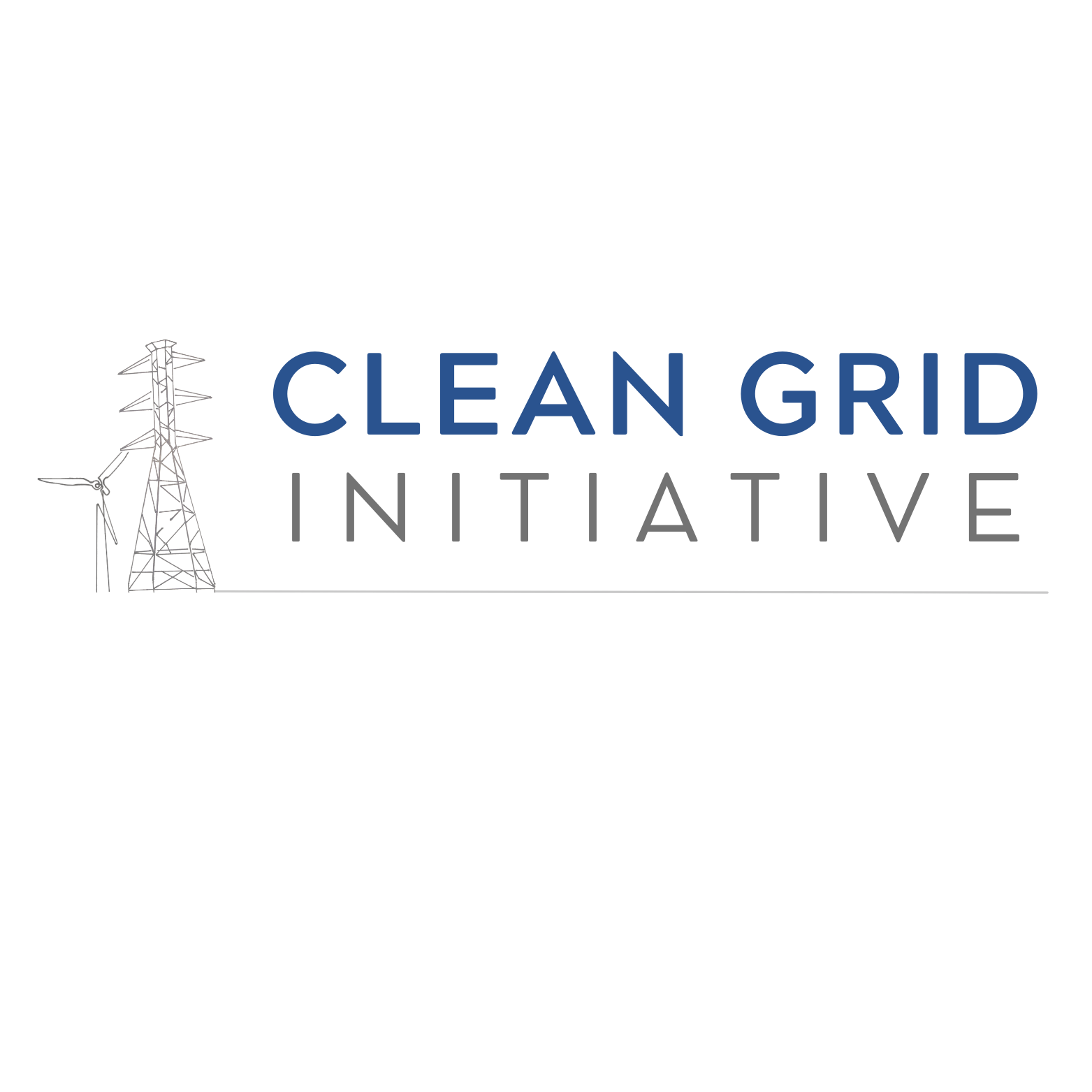
Clean Grid Initiative
View ProjectClean Grid Initiative
- Healthy Planet & People
- Resilient Communities
- Secure Natural Resources
-

Clean Grid Initiative
The challenge: To achieve the U.S. climate goals of a carbon free power sector by 2035 and net zero economy-wide emissions by 2050, a once-in-a-generation investment in rebuilding the U.S. electricity grid is needed. By some estimates, more than doubling the capacity of high-voltage transmission in the U.S. will be required in the coming decades. Transmission planning and development is complex and decision-making is fragmented across federal, state and local governments. Reforms are needed to remove transmission deployment bottlenecks, increase public awareness and acceptance of transmission and unblock the transition to clean energy.
What can be done?: Building public will for a once-in-a-generation investment in modernizing U.S. electricity infrastructure will require an expansive approach to education and outreach that reaches beyond the traditional venues and voices involved in electricity regulation to date. The Clean Grid Initiative seeks to fundamentally change the conversation about transmission, bringing new approaches and new partners to the table, and expanding the field of advocates working to accelerate the pace of transmission and clean energy deployment.
How Clean Grid Initiative (CGI) is meeting the challenge: CGI is a hub for strategic leadership, coordination, and grantmaking that raises ambition and expands capacity for unlocking transmission solutions at the state, regional, and national levels so that we can achieve a clean energy future. CGI seeks to respond to the current and emerging barriers to transmission expansion, and to advance a positive, affirming narrative about our country’s ability to meet this unprecedented challenge and make a cleaner, more reliable, and affordable future. The goal for CGI over the next five years is to accelerate transmission planning and deployment to enable a doubling of the U.S. transmission grid and a transition to 100% carbon free power by 2035.
More information coming soon!
This project aligns with the following Sustainable Development Goals
-
-

Climate Resilience Fund
View ProjectClimate Resilience Fund
- Healthy Planet & People
- Resilient Communities
-
Climate Resilience Fund
The challenge:
The UN’s Intergovernmental Panel on Climate Change reports that an annual investment of $2.4 trillion is needed in the energy system alone until 2035 to limit temperature rise to below 1.5 °C from pre-industrial levels. But the effort to tackle climate change goes beyond reshaping energy systems: it includes needed investments in reforestation, coastal-defense systems and many other efforts to cut emissions and adapt to rising temperatures. According to analysis, spending on adaptation efforts is particularly low. A drastic increase in investing in adaptation measures, such as early warning systems and resilient infrastructure, would not only avoid tremendous human suffering and economic losses, but would bring benefits that would outweigh the costs.
What can be done:
Communities around the world are beginning to realize that climate resilience and adaptation strategies are necessary if they are going to continue to thrive in the future. However, investments in these strategies remain far short of what’s needed.
How Climate Resilience Fund is meeting the challenge:
CRF works across the United States to advance climate resilience and sustainability outcomes for communities and the natural systems on which they depend. Together with public and private partners, CRF endeavors to expand the nation’s collective capacity to create a more adaptive, sustainable, climate-resilient society.
CRF is currently focused on three initiatives:
- The Climate Smart Communities Initiative, which helps communities on the frontlines of the climate crisis advance plans and projects through direct grants, practitioner training, and knowledge sharing.
- Wildfire Resilience Funders, a network that enables collaboration among philanthropic and private investors to promote wildfire-adapted landscapes and wildfire-resilient communities.
This project aligns with the following Sustainable Development Goals
-

Climate Safe Lending Network
View ProjectClimate Safe Lending Network
- Sustainable, Equitable Economies
- Healthy Planet & People
-

Service Area
Global-
Website
-
Contact this Project
Climate Safe Lending Network
The challenge: More than a decade after the global financial crisis, with less than a decade to prevent catastrophic climate change – and despite public commitments – our financial system is still financing fossil fuel expansion and failing to direct sufficient finance towards a green, just transition. According to Rainforest Action Network’s 2022 Banking on Climate Change report, since the 2015 Paris Agreement the world’s 60 largest commercial and investment banks have invested $4.6 trillion into fossil fuels. The major role that banks play in the global economy – through lending and investment decisions, employment, tax contributions and international trade – means that they play a critical role in successfully transitioning to net zero carbon economies. Key to containing carbon emissions to a 1.5°C global temperature increase is aligning bank lending with the goals of the Paris Climate Agreement.
What can be done? Getting global emissions of greenhouse gases onto a rapidly declining pathway requires deep transformation of the banking system – from the level of purpose, values, and mindsets through to the business processes and strategies that drive banks’ impact in the world. This level of change requires a two-pronged approach that consists of 1) supporting banking professionals in leading the adoption of climate safe lending policies (influencing change from within banks); and 2) aligning the efforts of external influencers, such as clients, investors, financial regulators, and environmental activists with a shared interest in removing carbon emissions from lending (pressuring banks to adopt climate-safe lending practices).
How Climate Safe Lending Network (CSLN) is meeting the challenge: CSLN supports lending institutions to collaborate with each other and wider parts of the financial system – including investors, clients, regulators, policy makers, academics, and civil society organizations – to align bank lending with climate safe scenarios that contain emissions to a 1.5℃ temperature increase and incorporate strategies for a socially equitable and just transition.
CSLN is concentrating collective efforts to align bank lending with climate safe scenarios through these collaborative initiatives, each of which is capable of incubating new ideas and driving transformative projects:
- Climate Safe Learning Lab: Connects and supports banking professionals who are advancing the climate agenda within their organizations.
- Climate Safe Policy Initiative: Engages commercial and central bank leaders in shifting the narrative about financial regulation to encompass financial and planetary stability.
- Climate Safe Prosumers & Influencers Initiative: Mobilizes commercial and retail clients to collectively influence banks to transition to climate safe lending practices.
Through these efforts, CSLN catalyses systems change by focusing on key leverage points in the banking system that when collectively acted upon by public, private, and civic sector leaders, can accelerate the decarbonization of the banking sector and real economy.
This project aligns with the following Sustainable Development Goals
-
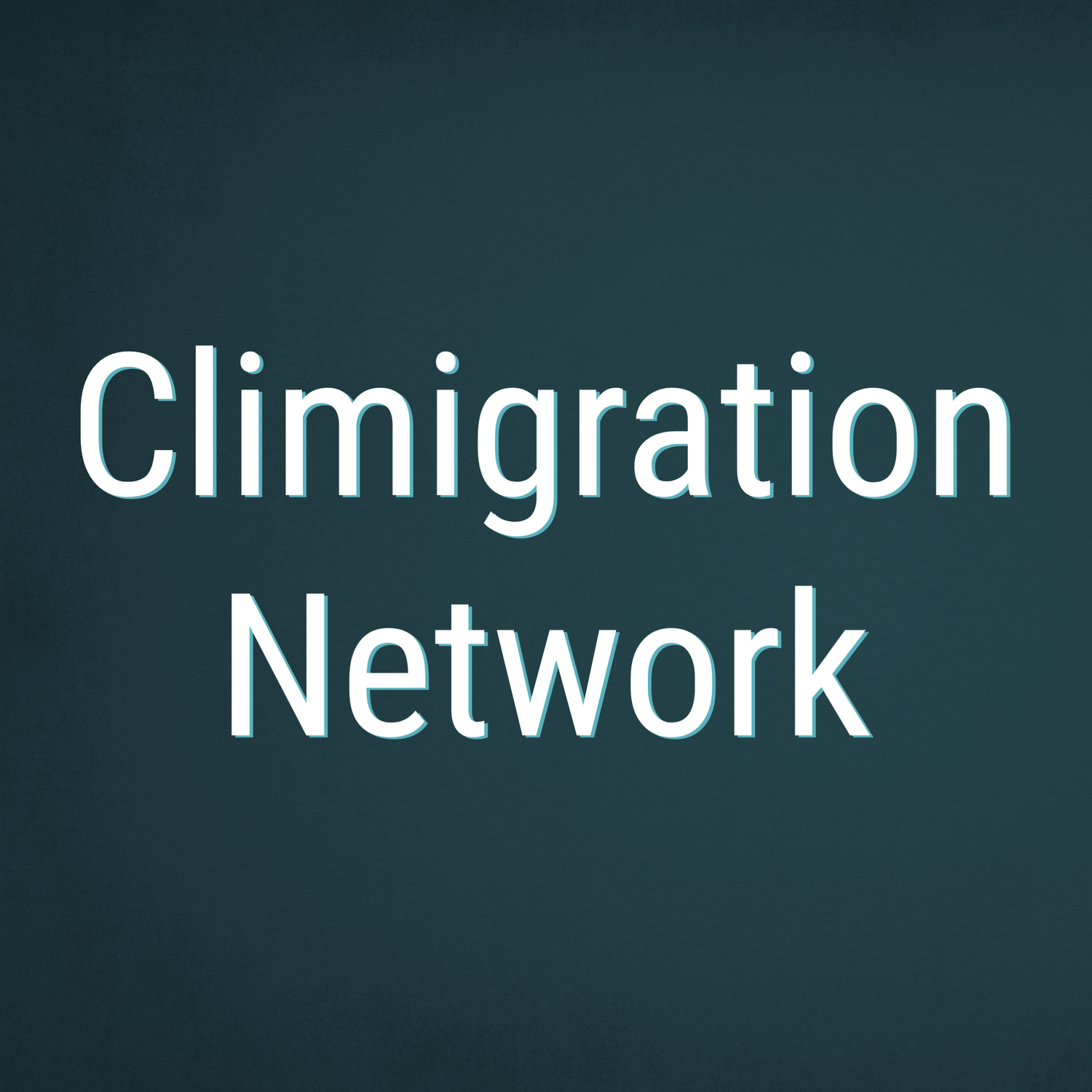
Climigration Network
View ProjectClimigration Network
- Healthy Planet & People
- Resilient Communities
-
Climigration Network
The Challenge:
In the face of escalating climate chaos, millions of people in the United States are at risk of displacement. In 2022 alone, 3.4 million adults were displaced by disasters, and in 2023, 28 disasters each incurred costs exceeding $1 billion. As climate-related events intensify, the number of people forced to leave their homes will only increase. However, only the most privileged will have the means to relocate without assistance.
Existing programs and services meant to aid those affected by climate disasters are often inaccessible to the communities that need them most due to entrenched policies and practices, and limited local capacity. They also frequently perpetuate systemic issues like racism, colonialism, forced relocation, and inequitable investment in disaster response and hazard protection. Trust and confidence in the scarce programs that exist are low because disaster assistance is not designed to generate stable, healthy communities safer from risk. It is a system of disaster, rebuild, repeat.
Our challenge is not only to create systems that support voluntary community-led responses to climate displacement but also to address deep-rooted social inequities that exacerbate risk in underserved communities.
What Can Be Done:
Responses to climate displacement must be led by community members, with a strong network of partners, collectively leveraging resources and innovating in policy and practice.
Making the decision to relocate is not simple or easy – communities need space and support to grieve their losses, heal from trauma, and envision their future. And all residents must have the support and resources they need to make informed decisions about whether, when, and how to relocate.
The best approaches will be rooted in reciprocity and justice, and foster trust, in stark contrast to the extractive practices and disaster profiteering that perpetuate crises. They will build pathways for safe, welcoming communities for those who must move. They will be grounded in lived experience and evidence and connect us to the lands that sustain us on Earth.
How Climigration Network is Meeting the Challenge:
The Climigration Network brings together people with lived and learned expertise to advance community-led responses to climate displacement in the U.S. and its territories. The Network is guided by a Council of community and Indigenous leaders, who are responding to climate risk and displacement locally, and field leaders in climate policy, practice, and research.
The Climigration Network
- Supports direct investment in Indigenous and community-led responses to climate displacement through our Next Step Cohort program, an award-winning peer learning and participatory grant-making program.
- Mobilizes and prepares technical experts to partner with community and Indigenous leaders to advance their responses to displacement.
- Documents, shares, and amplifies learning to benefit other communities facing displacement and to innovate on national, state and local policy solutions.
The Climigration Network envisions a world where communities, cultures, and ecosystems are safe from climate risk. Until that day, the Network is committed to centering local self-determination, building partnerships based on transparency and trust, and promoting climate adaptation policies and practices that value human and natural life. The Network is driven by stubborn optimism and a deep commitment to justice, healing, and the reciprocal relationships that connect people to the lands they call home.
This project aligns with the following Sustainable Development Goals
-
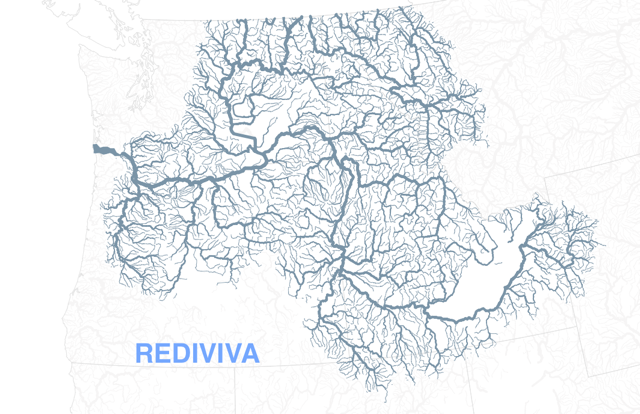
Columbia Rediviva
View ProjectColumbia Rediviva
- Healthy Planet & People
- Resilient Communities
-
Columbia Rediviva
The challenge:
Without efforts to protect the waters that support wild salmon in the Pacific Northwest, this keystone species may be headed toward total extinction. The Columbia River, which rises in the mountains of British Columbia and flows south into the U.S. through Washington state and Oregon, was once one of the world’s most productive salmon systems. Once central to the region’s culture and economies, the absence of salmon now shapes the region. Many Columbia River Basin salmon populations are already extinct; of those remaining, thirteen are endangered and over 80% are mass-produced in hatcheries instead of spawning naturally in the wild. The Columbia is also the most hydroelectrically engineered river system on Earth with more than 400 dams on the Columbia and its tributaries. In recent years, rising operation and maintenance costs combined with the proliferation of less expensive renewable energy, have lowered demand for electricity from the dams and rendering them obsolete.

What can be done?
Updating our outdated 19th Century operating framework to align with today’s understanding of two energy systems on the Columbia River – one electrical and one biological – can lead to the largest river restoration project in U.S. history, and creating a robust and distributed power grid, while fundamentally reshaping our relationship to the natural world in this region.
How Columbia Rediviva is meeting the challenge:
Columbia Rediviva is communications platform about the Columbia River Basin – its literal and figurative power structures, its salmon, its water, and its regional economy. Columbia Rediviva’s goal is to help area stakeholders make the best decisions – for their communities and for salmon – as dams are dismantled.
This project aligns with the following Sustainable Development Goals
-
-

Conservation Alliance for Seafood Solutions
View ProjectConservation Alliance for Seafood Solutions
- Sustainable, Equitable Economies
- Healthy Planet & People
- Resilient Communities
- Secure Natural Resources
-

Service Area
North America, South America, Europe, and Japan-
Website
-
Contact this Project
Conservation Alliance for Seafood Solutions
The challenge:
Feeding almost 10 billion people in the year 2050 will require innovative, collaborative, and viable solutions that consider political and economic uncertainty, growing pressure on natural resources, and climate change.

What can be done?
Substantial scientific evidence suggests seafood, both farmed and wild, has the potential to significantly contribute to food security on a global scale amidst these changes, if sustainable practices are widely implemented throughout supply chains. Such an approach supports vibrant and resilient ocean and freshwater ecosystems that contribute to improved livelihoods, healthy communities, and food security, while also protecting human rights, dignity, and access to resources for future generations. Non-governmental organizations (NGOs), governmental entities, and the seafood industry must align and foster best practices. The cultivation of an enabling business environment that drives supply chain actors to align their behavior with best practices and credibly document their efforts is essential if sustainability is to become the norm.
How Conservation Alliance for Seafood Solutions is meeting the challenge:
The Conservation Alliance for Seafood Solutions is a community of organizations that believe seafood production is a powerful driver of change for the health and biodiversity of our oceans and the economic and social well-being of individuals and communities around the world. With a shared understanding of the changes that need to happen to successfully transform the seafood supply chain, the Alliance works together to accelerate and increase the overall collective impact of our community.
This project aligns with the following Sustainable Development Goals
-

Conservation Finance Network
View ProjectConservation Finance Network
- Sustainable, Equitable Economies
- Healthy Planet & People
- Resilient Communities
- Secure Natural Resources
-
Conservation Finance Network
The Challenge: Increasingly, the conservation community has recognized that traditional models and sources of capital cannot keep pace with the scale of social, environmental, and economic problems, as evidenced by the $700 million annual biodiversity finance gap. Further, it is abundantly clear that a more holistic, systems approach is needed for conservation impact which better centers human health and equity considerations.
The emerging field of conservation finance offers critical ways to leverage public, private, and philanthropic dollars for the projects that matter. Yet there are few opportunities for practitioners to learn about these tools and techniques and how to put them to use. At the same time, capital providers are looking for new opportunities to put their resources to work in social, environmental, and equity-oriented projects. However, evidence suggests that the field is not impeded by the availability of capital, but by a multitude of other factors. These include a shortage of investable deals with appropriate risk and return profiles, a shortage of familiarity and expertise among investors and practitioners, small transaction sizes, difficult exit strategies, high transaction costs, and limited commercial support for early-stage projects. As such, progress against the finance gap depends on building sector-wide infrastructure and growing sophistication among practitioners.
What can be done: Expanding the use of blended finance strategies offers our best hope to achieve meaningful impact for human health and equity, climate change, land and water conservation, and biodiversity. By increasing capacity, confidence, and connections among a growing network of public, private, and nonprofit professionals, we can increase the amount of capital available for innovative—and effective—projects and efforts. Targeted convenings, technical assistance, and insight can bolster the work of land trusts, conservation organizations, community groups, investors and financial managers, foundations, public agencies, and academic institutions.
How The Conservation Finance Network is meeting the challenge: Conservation Finance Network (CFN) was founded in 2012 to accelerate the pace and scale of land and resource conservation, restoration, and stewardship by expanding the use of innovative and effective funding and financing strategies. As a trusted community of practice, we help practitioners develop and scale conservation finance approaches that increase their access to capital and environmental markets. CFN builds and supports a growing practitioner network through convenings, technical assistance, intensive workshops, and timely and actionable insight to increase the financial resources deployed for conservation. We accomplish this by employing the following goals and strategies:
Overarching Goals
- Expand the use of innovative and effective conservation finance strategies
- Build a networked community of practice
- Increase the financial resources deployed for land and resource conservation
Strategies
- Train: provide a sustained learning environment for practitioners
- Convene: create opportunities that allow for the sharing of actionable knowledge
- Incubate: foster the development of new techniques and strategies
- Partner: leverage the impact of the network through strategic and creative partnerships with people and institutions
- Disseminate: capture and disseminate innovative and cutting-edge approaches to funding and financing
- Build: sustain and build upon the Conservation Finance Network’s overall effort
- Elevate and Empower: Better center equity and justice considerations across the field by contributing to and elevating the efforts of practitioners, organizations, and coalitions.
This project aligns with the following Sustainable Development Goals
-
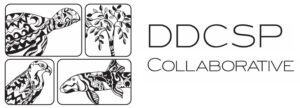
DDCSP Collaborative
View ProjectDDCSP Collaborative
- Resilient Communities
- Secure Natural Resources
-
DDCSP Collaborative
The challenge:
Solving the complex and accelerating problems of habitat loss, climate change, threats to biodiversity, and other conservation challenges requires innovative and imaginative solutions. The probability of identifying and implementing creative solutions is greatly enhanced when a diverse workforce consisting of people from a broad range of backgrounds brings new ideas, perspectives, experiences, and knowledge to the table.
Furthermore, in an increasingly diverse society, disciplines that draw from a narrow ethnic and racial slice of the population are likely to be undervalued by society. This is reflected in a lower level of participation in voluntary conservation activities, membership in conservation organizations, and donations contributed toward conservation by people of color than for people from the white population. Given the changing demographics of the US and the environmental challenges we face, fostering expertise in and appreciation of conservation science across the demographic breadth of society may be key to long-term success of conservation programs.
What can be done?
To diversify the field of conservation, we must build capacity in a diverse cadre of college graduates by providing them with skills in biodiversity conservation, leadership, and breaking down barriers to diversity and inclusion while in college. We must also provide access to the field by strengthening their relationships with other scholars and alumni of our program and by helping them build strong professional networks.
How DDCSP Collaborative is meeting the challenge:
The DDCSP Collaborative is designed to increase diversity, equity, and inclusion in the field of biodiversity conservation, with a specific emphasis on the conservation of land, water, and wildlife.
As a Doris Duke Conservation Scholars Program, the DDCSP Collaborative is a highly competitive, two-year undergraduate experiential research program focused on preparing the next generation of diverse environmental conservation professionals. Scholars take part in applied field research projects, professional internships, mentoring, and form strong professional networks. Scholars learn a variety of field techniques and research and presentation skills. Students are also prepared to help increase diversity, equity, and inclusion in the field of conservation through coursework in communication, creative problem solving, leadership, and diversity, equity, and inclusion all while building important leadership and communication skills.
Over the next year, the DDCSP Collaborative will be transitioning to a new home, the Conservation Collaborative, and will soon be known as the Conservation Collaborative Scholars Program.
This project aligns with the following Sustainable Development Goals
-
-

Environmental Data and Governance Initiative
View ProjectEnvironmental Data and Governance Initiative
- Healthy Planet & People
- Resilient Communities
- Secure Natural Resources
-
Environmental Data and Governance Initiative
The Challenge: Environmental regulations are not effectively protecting the environment and public health. This stems from: the influence those who benefit from environmentally harmful practices have on regulation and research ; data systems that have been designed with flawed scientific and social scientific assumptions; and forms of public engagement that constrain meaningful public participation in decision making, agenda setting, and actions to improve environmental health and justice.
What Can Be Done: Government actors can be held accountable by research communities and tools that enable rapid public analysis of changes in regulation, data, and websites. Additionally, data infrastructures can be redesigned to improve identification and prediction of environmental harms and to create more public accountability for these harms. Academics, non-profits, regulatory agencies, and communities can collaborate to build effective and just environmental information systems.
How the Environmental Data & Governance Initiative (EDGI) is meeting the challenge: EDGI is building software and research communities to track federal regulations, data, and websites. They have developed a research community who interview agency staff to offer uniquely human-centered analysis of changes within the federal government. Additionally, EDGI are developing new software for the public and their representatives to engage data on environmental contamination and the enforcement of environmental laws. EDGI are working to convene communities, academics, technologists, non-profits, and policy makers to discuss and develop more just, effective, accountable, and public forms of environmental data and governance.
EDGI’s work encompasses five major program areas:
- Analyzing the inner workings of federal environmental policy.
- Monitoring changes to, and exploring standards for, web-based information provided by the federal government about the environment, energy, and climate.
- Developing new ways of making environmental data more effective, accessible, just and accountable to the public.
- Conceptualizing and moving toward environmental data justice.
- Prototyping new organizational structures and practices for distributed, collective, and effective work rooted in justice.
This project aligns with the following Sustainable Development Goals
-

Fed By Blue
View ProjectFed By Blue
- Healthy Planet & People
- Secure Natural Resources
-
Fed By Blue
The Challenge: Over 3 billion people on our planet today rely on seafood for their primary protein source. Yet we are overfishing our oceans and waterways, endangered species are often caught as bycatch and important marine and aquatic ecosystems are threatened. As our population grows towards 10 billion by 2050, the United Nations and scientists worldwide are advocating for increasing seafood supply to provide food that is nutritious and accessible. As we work to meet this challenge, we must do so in a way that is restorative to our oceans and waterways to ensure healthy ecosystems and abundant “blue food” for generations to come.
What can be done: All actors -from fishers to consumers to policymakers – play an important role in protecting ecosystems and ensuring that blue foods are responsibly sourced. Educating consumers about the health and environmental benefits of responsibly sourced blue foods; ensuring transparency and traceability of where blue foods are caught or farmed; and securing policies that promote conservation and responsible sourcing of blue foods. A holistic approach to sustainable blue food is necessary.
How Fed By Blue is meeting the challenge: Fed By Blue is a first of its kind global campaign to raise awareness and inspire action for marine and aquatic conservation and responsibly sourced blue foods. The campaign will:
- Help consumers make the best choices about responsibly sourced seafood
- Educate young people about the importance of protecting ocean and aquatic ecosystems and using the resources responsibly
- Activate constituencies to advocate for policies that promote ocean and aquatic conservation and responsible sourcing of seafood
- Ensure that seafood can be traced from source to dinner plate
The fate of our planet depends on healthy, biodiverse oceans and waterways. Fed By Blue will help educate and activate new audiences to be part of the solution.
This project aligns with the following Sustainable Development Goals
-

FieldKit
View ProjectFieldKit
- Healthy Planet & People
- Resilient Communities
- Secure Natural Resources
-
FieldKit
The challenge:
Science and technology will be at the heart of the innovation that secures the future of our planet and its people. Without global advancement, scientists predict that ocean acidification and high greenhouse gas emissions will rapidly and significantly alter the ecosystems and food webs on which we depend. Weather will get warmer and more severe, and studies suggest that, by 2050, climate-driven events will make cities uninhabitable for as many as 200 million people who will need to migrate to survive. Species will not be able to adapt and extinction rates will rise. Without easily accessible science information, these rapidly-changing conditions cannot be monitored effectively and solutions may not be found before it’s too late.
For the last century, science and technology has been the engine of global economic growth. Now, we will also depend on it to save our planet and its people. In developed countries, science and technology are omnipresent, widely adopted, and accessible. For example, in the U.S., science, technology, engineering and math (STEM) jobs have outpaced other industries for more than 40 years and leading technology and science companies are often challenged to fill the jobs to meet growing demand. In contrast, developing countries still lag far behind the developed world, both in leveraging innovative technology developed elsewhere, and in fostering the institutions that can support advancing technology in-country. Without strong science and technology-based economies, the developing world lacks the knowledge, systems, and tools that can drive many aspects of social and economic development in critical areas like agriculture, health care, infrastructure, communications, and climate resilience.

What can be done?
There is an urgent need for development of low-cost and highly reliable scientific and research monitoring technology that can make data readily available anywhere in the world. By easing access to data collection and analysis tools, real-world applications of new ideas can be developed cost-effectively and rapidly and can accelerate planet- and people-saving advances.
How FieldKit is meeting the challenge:
FieldKit is an open-source software and hardware platform that allows individuals and organizations to collect and share field-based research data, and to tell stories through interactive visualizations. It bridges the gap between hard science and storytelling, by combining the analysis features of open science frameworks with the public-facing storytelling features of data visualization and map-based interactive platforms. The scientific community, students and educators, conservation and wildlife NGOs, citizen scientists, environmental activists, and science communicators can all benefit from FieldKit. The platform is currently under development and includes:
* FieldKit Hardware: microcontroller-based open source sensor kits equipped with SD card slot, GPS, wifi, and sensor-to-sensor radios.
* FieldKit.org website (modular database software for collection, storage, visualization, and sharing of research data)
* FieldKit App: Android/iOS app that connect to fieldkit.org and allows for sensor configuration, data download, and photos/videos/recordings from the field.
* FieldKit Naturalist: A handheld unit that gather high fidelity environmental metadata (temp, humidity, light level, noise level, dew point, altitude, etc) as the student/scientist/explorer is walking around.
This project aligns with the following Sustainable Development Goals
-
-
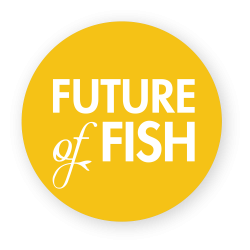
Future of Fish
View ProjectFuture of Fish
- Sustainable, Equitable Economies
- Healthy Planet & People
- Resilient Communities
-
Future of Fish
The Challenge: International small-scale fisheries are most vulnerable to the threats of overfishing and climate change. Small-scale fisheries represent over 50% of the wild capture seafood caught globally and include 90% of the workforce in the industry. The threats of overfishing, pollution and degradation not only puts the global environment at risk, but it has direct human impacts on over 3 billion people globally who rely on seafood as their main protein source. Failing to solve these problems can have catastrophic knock-on effects for the communities reliant on wild fish as livelihoods, food security, and resilient communities all come under threat.
What can be done: Thriving, resilient oceans that support more fish, feed more people and improve prosperity are within reach. With every fisheries management success, the prospects improve for healthy oceans that help sustain the well-being of nations, communities and people around the world. Better business practices and increased investment are needed that benefit both fishing communities and industry in order to create thriving ocean based economies. However, small-scale fisheries continue to deteriorate as the complex problems of human development, informality, inequitable supply chains, and lack of policy and enforcement are too great for any one stakeholder to tackle. Deep and broad collaborations are urgently required to unlock resources and create incentives for change. Only by working together and taking a holistic approach, can we end overfishing without ending fishing.
How Future of Fish is meeting the challenge: Future of Fish (FoF) serves as a system intermediary connecting small-scale fisheries to critical networks including seafood businesses and the private, public, and non-profit sectors. FoF brings these groups together to co-design, innovate, and implement replicable, scalable solutions and develops access to resources appropriate for both grassroots and broader systemic impact. Through diverse collaborations, FoF creates the enabling conditions to remove the barriers to change, incentivizing better business practices to improve sustainability, equity and economic opportunity in coastal communities.
This project aligns with the following Sustainable Development Goals
-
-

Intertidal Agency
View ProjectIntertidal Agency
- Sustainable, Equitable Economies
- Healthy Planet & People
- Resilient Communities
- Secure Natural Resources
-
Intertidal Agency
The challenge:
Data is critical to maintaining ocean health, but too often, ocean data is difficult to find, access, and use — if it exists at all. 80% of the ocean is unmapped and understudied, and when valuable data are collected, they need to be shared to have impact. The ocean needs new data collaborations and a community of data stewards, with the skills and capacity to deliver the information we need for the ocean we want.
What can be done?
We’re building the people layer of data because sharing data is as much about relationships, mindsets, and behaviors as it is about technology. Data governance aligns data infrastructure, management, and policies with project goals, making it easier to share data for purpose. Ocean professionals can adapt best practices for data governance from other sectors to unlock data across governments, communities, scientists, nonprofits, and businesses. Modern data platforms can enable complex ocean analyses while protecting sensitive or confidential data, like tribal and Indigenous knowledge. By making our tools and methods open, Intertidal Agency makes ocean data stewardship accessible to everyone, helping catalyze new insights and solutions for the ocean.
How Intertidal Agency is meeting the challenge:
Creating Data Strategy
We help partners align around goals, map data ecosystems, assess barriers, plan and implement strategy for a data-informed future.
Example: We worked with the UN Ocean Decade’s Data Committee to understand the project focus areas and data capacity needs for Ocean Decade Projects and Actions, contributing analyses and helping write and edit the Decade Data & Information Strategy.
Building Data Governance Capacity
We train and support ocean professionals and project teams as they navigate the complexities and opportunities around data sharing.
Example: We co-wrote the data governance chapter for the Regional Wildlife Science Collaborative for Offshore Wind (RWSC) Science Plan, drafted language for their standard data policy, and are helping them assess tools and methods for data interoperability and reuse.
Developing Data Partnerships
We expand our partners’ technical data sharing skills, create a culture of data sharing, and grow the global community of ocean data stewards.
Example: As part of our 2021-2022 NSF Convergence Accelerator project on Data Governance to Support an Equitable and Sustainable Blue Economy, we developed and ran data governance trainings for Early Career Ocean Professionals. Topics included data collaborative structures, governance, and stewardship.
This project aligns with the following Sustainable Development Goals
-
-

Marhaver Lab/Creative Coral Science for Reef Recovery
View ProjectMarhaver Lab/Creative Coral Science for Reef Recovery
- Sustainable, Equitable Economies
- Healthy Planet & People
- Resilient Communities
- Secure Natural Resources
-

Service Area
Caribbean Sea and other reefs throughout the world-
Website
-
Contact this Project
Marhaver Lab/Creative Coral Science for Reef Recovery
The challenge:
A healthy ocean depends on healthy coral reefs. Coral reefs cover less than one percent of the seafloor, yet they house approximately 25% of all species in the ocean. They are also vital to our global economy. Coral reefs are worth $1 Trillion USD per year through fisheries production, drug discovery, shoreline protection, and the creation of tourism jobs. However, compounding stressors – especially coastal development, overfishing, sewage input, fertilizer runoff, and temperature shock – are causing critical declines in the reproductive output and genetic diversity of coral populations.

What can be done?
To complement coral conservation on the policy scale, innovative technical solutions are needed at the reef scale to pioneer new methods to save our reefs and the ecosystems they support.
How Marhaver Lab is meeting the challenge:
The Marhaver Lab is a marine biology research lab based in Curaçao. By studying reproduction in the Caribbean’s most fragile corals and inventing new tools to help them survive, the Lab pioneers methods so that everyone can grow more corals, faster. This includes decoding the reproductive behavior of understudied species through traditional natural history and combining advanced methods from diverse fields of science and engineering. The Marhaver Lab also hosts students from around the world for projects in coral ecology, reproduction, and restoration. Working at the leading edge of coral science, the Lab recently partnered with the Smithsonian Mote Marine Lab and the Florida Aquarium to achieve the first assisted gene flow in Caribbean corals, and the first fertilization of the threatened Elkhorn Coral Acropora palmata using cryopreserved sperm. This breakthrough creates powerful new tools for coral conservation, gene banking, and reef restoration.
This project aligns with the following Sustainable Development Goals
-

MarViva Foundation
View ProjectMarViva Foundation
- Sustainable, Equitable Economies
- Healthy Planet & People
- Resilient Communities
- Secure Natural Resources
-

Service Area
Eastern Tropic Pacific/Oceano Pacífico Este Tropical (PET)-
Website
-
Contact this Project
MarViva Foundation
The challenge:
The Eastern Tropical Pacific (ETP) Ocean, which extends from San Diego west to Hawaii and south to Peru, is one of the richest and most bio-diverse regions in the world. Its coastal habitats and ecosystems are the foundation of a dynamic tourism industry, and multiple industrial and artisanal fisher sectors depend on its marine resources. It contains high productivity coastal and high seas sites, contributing significantly to global climate regulation. Despite priceless environmental services and socioeconomic benefits, the ETP faces increasing threats to sustainability, among others, unsustainable and illegal fishing, wildlife trafficking, pollution, sectoral policy-making, and weak institutional capacities and coordination.
What can be done?
Promote a balance between socioeconomic development and marine conservation, in favor of environmental sustainability and the well-being of present and future generations.
How MarViva Foundation is meeting the challenge:
MarViva Foundation, created in 2002, is a regional non-profit NGO with mission to promote the conservation and sustainable use of marine resources in the ETP. MarViva advances participatory initiatives in the local and regional scope, leveraging its multidisciplinary experts team, composed of marine biologists, environmental lawyers, geographers, journalists, business administrators and other complementing specialists. With focus in Costa Rica, Panama, Colombia, and the High Seas, MarViva facilitates multi-sectoral processes to advance marine spatial planning, market incentives for conservation and integral development (with emphasis on sustainable fishing and tourism, and the deterrence of marine litter), and capacity building for enhanced marine stewardship.
El reto:
El Pacífico Este Tropical (PET), que se extiende desde San Diego hasta Hawaii y el sur de Perú, es una de las regiones más ricas y biodiversas del mundo. Sus hábitats y ecosistemas costeros son la base de una dinámica industria turística, y múltiples sectores de pesca artesanal e industrial dependen de sus recursos marinos. Contiene sitios costeros y de alta mar, de alta productividad, que contribuyen de forma significativa a la regulación climática global. A pesar del valor incalculable de los servicios ambientales y beneficios socioeconomics, el PET enfrenta crecientes amenazas a la sostenibilidad, entre otras, pesca insostenible y/o ilegal, tráfico de especies, contaminación, planificación sectorial de políticas, y debilidad de capacidades y coordinación institucional.
¿Qué podemos hacer?
Promover un balance entre el desarrollo socioeconómico y la conservación marina, en favor de la sostenibilidad ambiental y el bienestar de las presentes y futuras generaciones.
Cómo MarViva está enfrentando el reto:
Fundación MarViva, creada en 2002, es una ONG regional sin fines de lucro, con misión de promover la conservación y uso sostenible de los recursos marinos en el PET. MarViva impulsa iniciativas participativas in el ámbito local y regional, con base en su equipo multidisciplinario de expertos, compuesto por biólogos marinos, abogados ambientales, geógrafos, periodistas, administradores de empresas, entre otras fortalezas complementarias. Con enfoque en Costa Rica, Panamá, Colombia y al Alta Mar, MarViva facilita procesos multisectoriales para avanzar el ordenamiento espacial marino, incentivos de mercado para la conservación y el desarrollo integral, (con énfasis en pesca y turismo responsables, y el combate a la contaminación marina), y construcción de capacidades para el mejoramiento de la gestión del mar.

This project aligns with the following Sustainable Development Goals
-
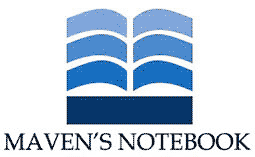
Maven's Notebook
View ProjectMaven's Notebook
- Healthy Planet & People
- Resilient Communities
- Secure Natural Resources
-
Maven’s Notebook: California Water, Verbatim
The challenge:
In California, a state faced with ongoing water supply challenges, access to water is critical. California’s working lands, a $50 billion driver of the state’s economy, need access for irrigation and drought reserve. California’s growing population relies on the water supply for safe drinking water and sanitary systems. Both of these needs must also be weighed against the need for protection and conservation of California’s natural resources, include rivers and streams and other riparian habitats that support birds, fish and other wildlife. Given these demands, the world of California water policy is confusing, complex, and controversial. Californians face a constant barrage of opinions, arguments and assertions of ‘facts’ about water. Making sense of the competing claims is extremely difficult and finding accurate information on California’s water issues can be frustrating and time-consuming, even for those working in the water industry.

What can be done?
An informed public, and informed policy makers, are essential to resolve California’s complicated water challenges. We need a comprehensive source of factual, unbiased information on California water issues that will allow us to effectively weigh competing priorities — a need that will only continue to grow in the face of climate change.
How Maven’s Notebook is meeting the challenge:
Published daily, Maven’s Notebook helps cut through the complex and controversial details of water flow, water supply and water quality and environmental disputes, leading to more rational outcomes. As a source of objective and understandable information about these multi-faceted issues, the Notebook’s unique value comes from several complementary approaches:
- Objectivity: To ensure objectivity, the Maven’s Notebook rejects editorializing in favor of reporting. the Notebook covers critical events such as meetings of state agencies and quotes the participants directly and at greater length than conventional media coverage, leaving it to the reader to judge how successful the different interests are in making their case.
- Comprehensiveness: Maven’s Notebook provides reliable, hard to get information by reporting on major planning/regulatory efforts. For example, the Department of Water Resources, the Department of Fish and Wildlife, and the State Water Board all issue a steady stream of press releases which are meant to inform, yet planning and regulatory efforts go mostly unreported in the mainstream media.
- Timeliness: Maven’s Notebook is the only daily source of complete, comprehensive California water news. Published daily, it posts breaking news, provides weekly updates on reservoir and hydrologic conditions, and provides daily news aggregation of relevant news, articles, and commentary, as well as a calendar of meetings and events that are of interest to readers.
In an effort to make this information as accessible as possible, there is no charge to use the Notebook website. It is reader-supported journalism, made possible by donors and sponsors.
This project aligns with the following Sustainable Development Goals
-
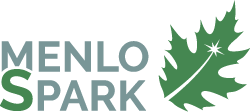
Menlo Spark
View ProjectMenlo Spark
- Sustainable, Equitable Economies
- Healthy Planet & People
- Resilient Communities
- Secure Natural Resources
-
Menlo Spark
The challenge:
Climate change is harming our health, finances, and natural spaces. Recent reports on global climate change have stated clearly that we need to move away much faster from fossil fuels to retain any hope of preventing a perilous future on an overheated planet. Global temperature rise is currently on track to exceed the Paris Agreement target of limiting temperature rise to no more than 2°C, however, the world can achieve sharp emissions reductions and avoid climate catastrophe with existing technologies.

What can be done?
Hundreds of scientist agree that we must slash emissions by more than 40% within the next 7 years to have any chance of avoiding the worst impacts of climate change (limiting warming to 1.5°C (2.7°F)). The good news is that we can achieve this with tools either already available or in rapid development—though time is running out.
Key steps to avoiding the worst impacts of climate entail:
- Halting development (and use) of additional fossil fuels and accelerating our transition to renewables, which can be facilitated by falling prices for clean technologies;
- Fast-tracking the shift to electric vehicles;
- Eliminating methane gas use & reimagining efficiency when designing and operating buildings;
- Redesigning cities—where majority of people live—to avoid sprawl, add more green spaces, and better facilitate public transport, walking and biking.
Other important steps include reducing deforestation, restoring coastal ecosystems, and improving the management of working lands, like farms and ranches. Carbon removal technologies are also considered essential to achieving climate targets, and these and dozens of other nascent climate innovations must be funded, developed and rapidly scaled. And as individuals, we can make a difference in our own daily lives by adopting cleaner transportation habits, switching to plant-based diets, reducing all forms of waste, and voting for leaders who will prioritize climate action.
How Menlo Spark is meeting the challenge:
Smaller communities like Menlo Park have the power to spark solutions!
Menlo Spark is a nonprofit collaboration of local government, businesses, and residents helping Menlo Park adopt a suite of measures by 2025 that are necessary to reach zero carbon by 2030, as we advance equity, economic vitality, and community health. Our key focus areas include:
- Building Electrification: Coordinating a citywide shift to fully electric heating and appliances, that avoids fossil fuel use in homes and buildings.
- Transportation: Increasing safety and accessibility of walking and biking, providing more public transit choices, and supporting the adoption of electric and zero-emission vehicles.
- Sustainable Living: Promoting simple everyday actions to reduce climate impacts.
- Equitable Access: Creating assistance programs, especially for low- and moderate-income households, and other measures to ensure an equitable and affordable transition.
Climate change is no longer a future threat; it is here now. The impacts of severe drought and wildfires confront Californians every day, and as fossil fuel emissions continue, those impacts will escalate. With our highly engaged community and unique resources in the heart of Silicon Valley, Menlo Spark is a national leader in climate action, generating massive local benefits while serving as an example to similar cities and towns across the country.
This project aligns with the following Sustainable Development Goals
-
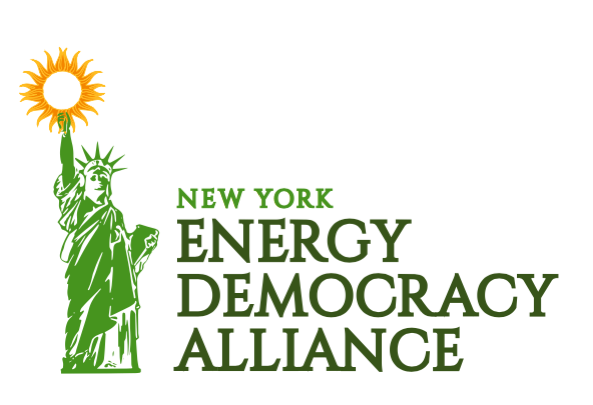
New York Energy Democracy Alliance
View ProjectNew York Energy Democracy Alliance
- Sustainable, Equitable Economies
- Healthy Planet & People
-
New York Energy Democracy Alliance
The Challenge: Residents of cities, towns and states should have the right and the authority to determine their own energy future, protect vulnerable populations, and prevent the wholesale destruction of our precious ecosystems. Too often though, residents are overruled by private corporations, investor-owned utilities, regulators and legislators who may not have their best interests in mind. Putting ownership and control over the means of sustainable energy production into the hands of everyday people, into the hands of municipalities, and into the hands of local communities must be a top priority for our cities, states and nation as a whole.
What Can Be Done: Renewable energy systems that are led by and prioritize solutions for low- and moderate-income communities and communities of color who are most negatively impacted by our current energy and economic system can help transform a community’s relationship to power. Through advocacy, organizing, job creation, coalition-building, policy research, and public education for an equitable, sustainable energy future, we advance legislative and regulatory interventions that benefit low-income communities and communities of color, and to follow the wisdom of these communities in determining what that looks like.
How the New York Energy Democracy Alliance (NYEDA) is meeting the challenge: The New York Energy Democracy Alliance is an alliance of 27 community organizations, grassroots groups, and policy experts working toward a just transition to a resilient, localized, and democratically controlled clean energy economy in New York State. NYEDA supports a rapid and equity-based transition to 100% clean, renewable, fossil-free, nuclear-free energy in order to address climate change, build resilient communities and create economic opportunities. NYEDA derives strength from its highly organized, yet decentralized leadership structure: many leaders make our work possible, and our work is grounded in the varied experiences and expertise of our member organizations. Their leadership is elected and accountable to our membership.
This project aligns with the following Sustainable Development Goals
-
-
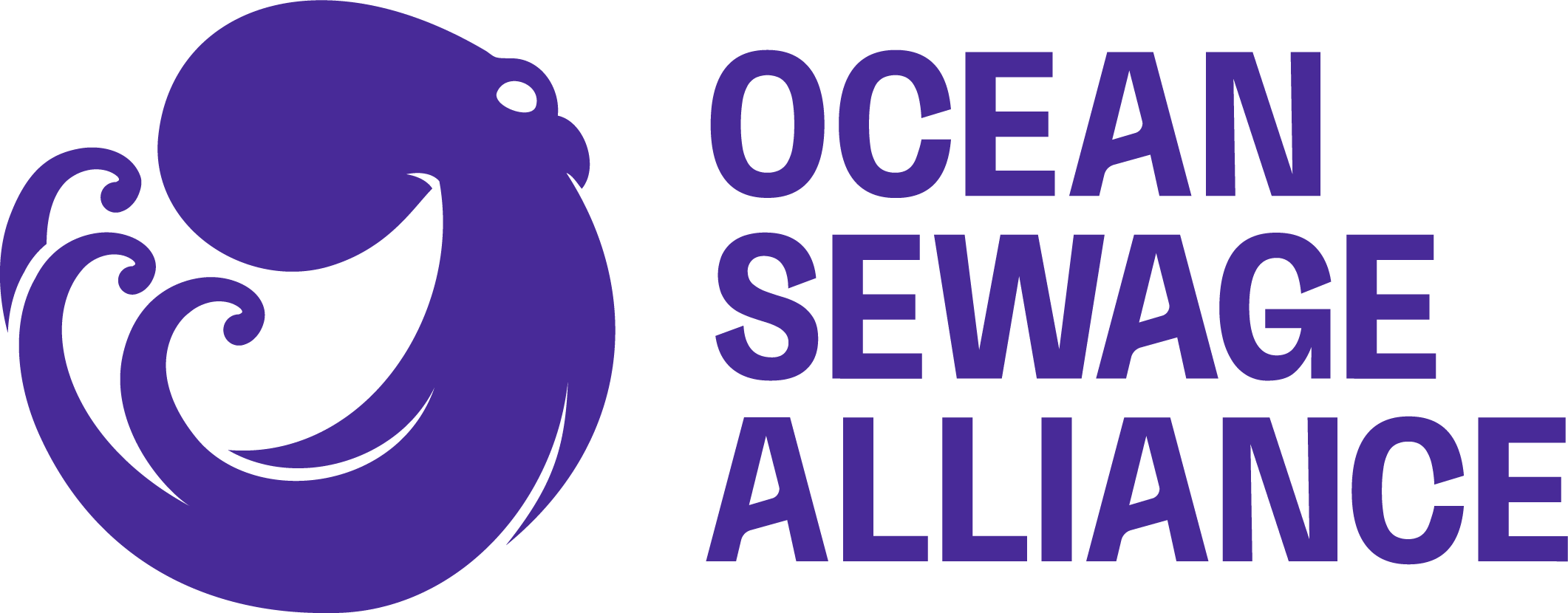
Ocean Sewage Alliance
View ProjectOcean Sewage Alliance
- Healthy Planet & People
- Resilient Communities
- Secure Natural Resources
-
Ocean Sewage Alliance
The Challenge: It is estimated that 80% of human waste is discharged into the environment untreated every year. In developed coastal areas, sewage is often the most wide-spread pollutant, and it’s known to contain hundreds of different compounds, including excess nutrients, pathogens, endocrine disrupters, suspended solids, sediments, heavy metals, and other toxins. Sewage pollution is bad for any coastal ecosystem, but some of the most obvious effects can be seen in areas with coral reefs, where the extra nutrients spur algae and seaweed growth, which choke out the reefs. When reefs die, fish populations suffer, which in turn hurts fishing and can also impact tourism. And yet, sewage pollution is rarely addressed as an environmental problem.
What can be done: Human health watchdogs such as the World Health Organization are well aware of how poorly managing and dumping human waste leads to toxic algal blooms that are deadly to people as well as outbreaks of cholera, hepatitis, infectious viruses and gastroenteritis. They’ve been working for decades to improve water, sanitation and hygiene solutions in this sector that are meant to keep people from getting sick, such as by increasing hand washing or using chlorine tablets. These methods help prevent illness in people but don’t do anything to address the root causes of the polluted water. Similarly, most environmental legislation, such as laws that create Marine Protected Areas, are designed to keep people from taking too much from the ocean, not to protect from what people put into it.
How Ocean Sewage Alliance is meeting the challenge: Ocean Sewage Alliance is a diverse collective of organizations and academic partners committed to reducing the threat of ocean wastewater pollution and increasing the health and wellbeing of both humans and nature. Through cross-sector collaboration, synthesis and sharing of knowledge, developing solutions and raising awareness of the problem Ocean Sewage Alliance will:
- Build an evidenced-based case to drive action and support decision-making to reduce wastewater pollution
- Create a united voice that supports action
- Serve a knowledge and learning hub to support successful implementation of solutions
- Expand the donor network and funding to support evidenced based actions that reduce ocean wastewater pollution.
The Ocean Sewage Alliance will promote cross sector collaboration and make it easier for a diverse set of practitioners to become fluent in the problem of ocean sewage pollution and learn how to best engage with others who are interested in tackling the problem.
This project aligns with the following Sustainable Development Goals
-

Open Research Community Accelerator
View ProjectOpen Research Community Accelerator
- Healthy Planet & People
- Resilient Communities
-
Open Research Community Accelerator
The Challenge:
The traditional model of science erects barriers for students, practitioners, policymakers, industry, the general public, and—increasingly—researchers outside of the best-resourced institutions. When research findings are inaccessible, opaque, and difficult to verify, the ripple effects for both science and society are dramatic. Patients, caregivers, and doctors can’t rely on cutting edge findings to inform treatment plans. Policymakers are less equipped to lean into evidence-based decision making. Scientists can’t test and build off of prior studies to accelerate the pace of discovery. Facing existential challenges like climate change and pandemics, a system that excludes voices, hinders progress, and eschews transparency is outmoded and counterproductive.
What Can Be Done:
Open science is a burgeoning global movement transforming the traditional research and knowledge dissemination landscape. Characterized by transparency, collaboration, equity, and accessibility, open science aims to make scientific research and findings freely available to communities, patients, practitioners, policymakers, and the general public. By making research findings freely available, open science facilitates greater collaboration among scientists, enables wider participation and trust in the scientific process, and fosters innovation. Moreover, by democratizing access to scientific knowledge and involving broader societal actors, open science can address pressing global challenges more effectively.
How Open Research Community Accelerator is Meeting the Challenge:
The Open Research Community Accelerator (ORCA) works with communities across the research ecosystem to make science more engaging, accessible, and actionable. ORCA aspires to a world in which open science is the expectation and norm for research and is disseminated openly by default.
ORCA recognizes that effecting systems-level change requires collaboration across a wide range of organizations and sectors. These efforts encompass open science policies, incentive structures, infrastructure solutions, training programs, and impact assessment mechanisms. The ORCA team has deep experience nurturing coalitions across sectors — philanthropies, higher education institutions, government agencies, professional societies, international bodies, and industry — to advance practical collaborations that propagate data-driven best practices.
This project aligns with the following Sustainable Development Goals
-
-
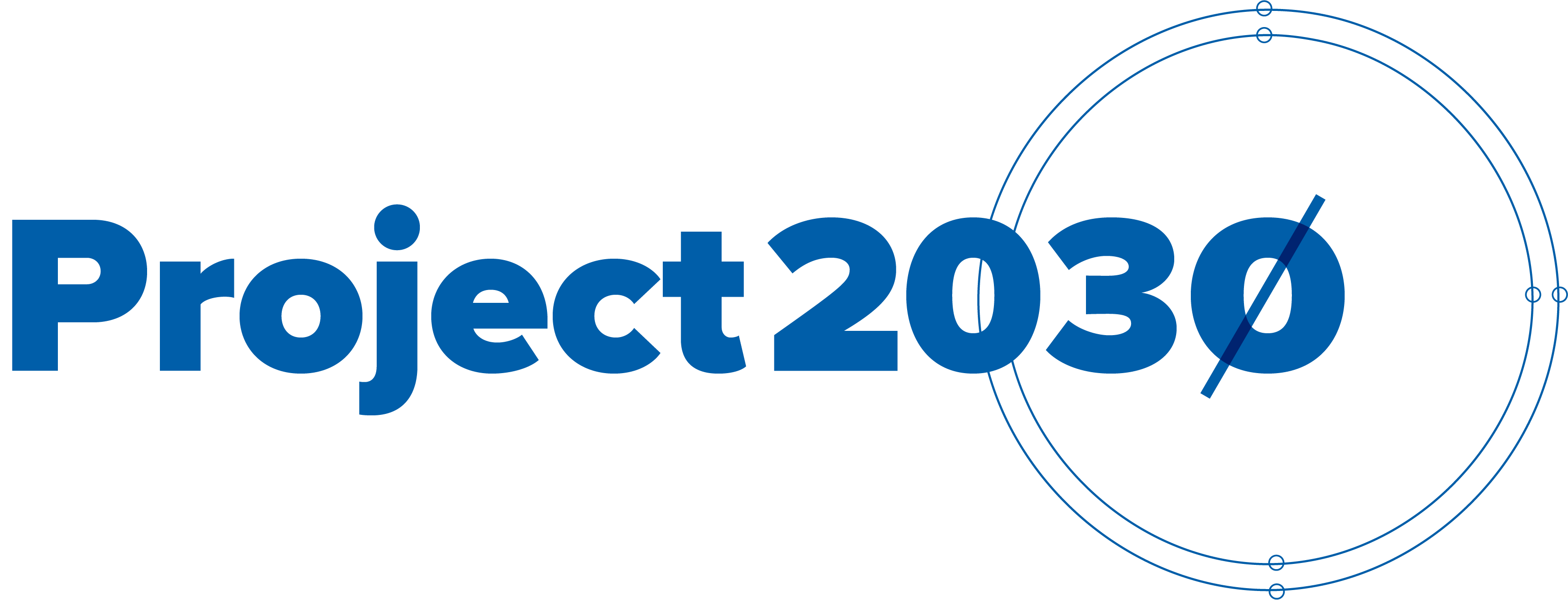
Project 2030
View ProjectProject 2030
- Healthy Planet & People
- Resilient Communities
- Secure Natural Resources
-

Service Area
California-
Website
Project 2030
The Challenge:
For years, the global scientific community has warned policymakers throughout the world about the need to keep global temperatures from increasing more than 1.5°C above pre-industrial levels.
Scientists worldwide have acknowledged that the climate is changing more rapidly than predicted, and many now believe that overshooting the 1.5°C target is inevitable, further destabilizing the climate. Since the world has not moved quickly enough to reduce greenhouse gas emissions, we now need to do so much more: in addition to accelerating emission reductions, we must rapidly phase out the use of fossil fuels, electrify transportation, decarbonize industries and economies all over the world, and start removing carbon dioxide from the atmosphere.
We can do this. We must do this. And we must do it equitably.
What Can Be Done:
We are on the cusp of new technological breakthroughs that will help accelerate two essential pathways to stabilize the climate: industrial decarbonization and the development of a new carbon removal infrastructure.
The U.S. is now investing more money in climate solutions than any government anywhere has ever invested. The recent Bipartisan Infrastructure Law and the Inflation Reduction Act committed billions of dollars to accelerate the development and scaling of these technologies and infrastructure.
But we have to do it right. Previous industrial development ran roughshod over many communities, with destructive health and economic consequences. We must ensure that industrial decarbonization and carbon removal are accomplished equitably—they must benefit their host communities and do no harm.
How Project 2030 is Meeting the Challenge:
Project 2030 is a non-profit team of mostly volunteer alumni climate advocates, engineers, scientists, and entrepreneurs. We create short-term interdisciplinary teams to engage in research, policy design, educational efforts, and stakeholder convenings aimed at accelerating equitable industrial decarbonization and carbon dioxide removal efforts.
Some of our priorities include: accelerating the use of renewable-powered heat batteries for industry and carbon removal projects, direct air capture, decarbonizing cement, phasing out fossil fuels, alternative methods of CO2 transport, sustainable biomass management, agrivoltaics, and the development of a public sequestration authority focused on the public good.
Project 2030’s mission is to achieve and exceed California’s 2030 and 2045 climate goals and ensure those efforts are effective, equitable, and sustainable. Though our work is focused on California efforts, we work with subject matter experts around the world on policy designs that can be replicated nationally and globally.
This project aligns with the following Sustainable Development Goals
-
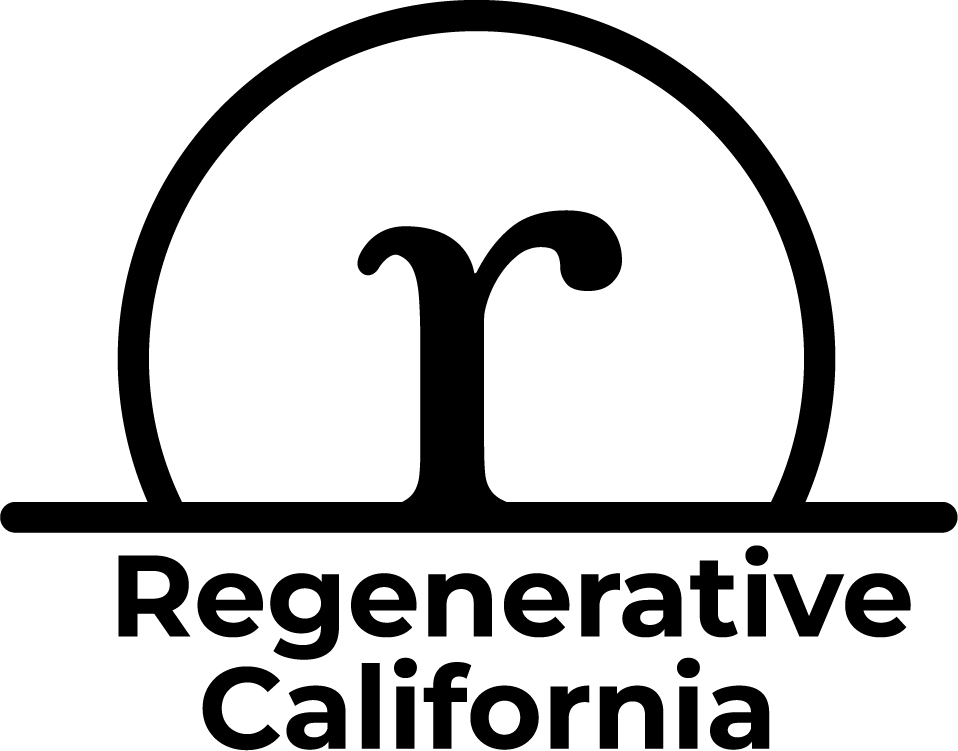
Regenerative California
View ProjectRegenerative California
- Sustainable, Equitable Economies
- Healthy Planet & People
- Resilient Communities
- Secure Natural Resources
-
Regenerative California
The Challenge:
Our modern economy has delivered remarkable prosperity. That same economy has also led to, social unrest, a climate crisis, and the depletion of natural resources among other challenges. A regenerative economy by contrast is one that delivers enduring health and prosperity for both human and natural systems.
Our vision is for California to lead the nation with a network of place-based regenerative economies that demonstrate a path to prosperity for California.
What Can Be Done:
Residents, businesses and government leaders are looking for tangible models and examples of regenerative economies to believe the transformation of our current economic system is possible and to begin to take steps in that direction.
Over the course of its over 150-year history, California has become one of the leading economies in the world. California has also enacted many of the country’s most innovative social and environmental policies and regulations, and businesses have demonstrated that such standards contribute to economic growth. And yet even as a global leader and economic super-power, California faces many of the same challenges as elsewhere: record-high temperatures and droughts, unprecedented wildfires, a growing population of unhoused people, and a widening wealth gap.
California has what it takes to collaborate across traditional silos of government, nonprofit and the private sector to design and activate regional regenerative economies that deliver enduring health and prosperity.
How Regenerative California is Meeting the Challenge:
Regenerative California is a collaboration of business, community, government and nonprofit leaders with an ambition to help Californians transform our current economic system to be regenerative, thereby creating enduring health and prosperity for California. We bring people together across industries and sectors in regional economies to demonstrate a path to prosperity for California. We connect and convene to identify regional challenges and opportunities; we support and enable partners to co-design and implement a portfolio of projects; and we educate and amplify to inspire with stories of what works.
Monterey County was selected as our first pilot region because it features many of the social and environmental challenges and opportunities found elsewhere across the state. In Monterey we are working with partners across the private, public and nonprofit sectors to co-design and implement projects that tackle the interconnected challenges of affordable housing, agricultural transitions, access to healthy food, and conservation of critical kelp forests. These projects were identified as the ones that will help strengthen the local Monterey economy in ways that deliver enduring health and prosperity to residents, businesses and the natural environment.
This project aligns with the following Sustainable Development Goals
-
-
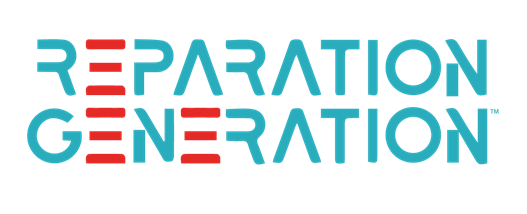
Reparation Generation
View ProjectReparation Generation
- Sustainable, Equitable Economies
- Healthy Planet & People
-
Reparation Generation
The Challenge: The average white family has roughly 10 times the amount of wealth as the average Black family. White college graduates have over seven times more wealth than Black college graduates. The racial wealth gap in America started with slavery but hasn’t diminished over time. Centuries of discrimination and government policy, most powerfully through land and housing, took wealth earned by Black Americans before it had the opportunity to grow. Making the American Dream an equitable reality demands that wealth that was denied to Black Americans be restored in the form of individual cash payments that will close the Black-white racial wealth divide.
What Can Be Done: The most powerful and effective form of reparation would be a U.S. government federal reparations package that includes individual and collective benefits that build wealth and reduce debt for Black Americans. This could include things like individual payments, college tuition remission, student loan forgiveness and housing down payment or business grants for descendants of enslaved Black Americans. So far, the US government has shown little will to enact a reparations package despite several opportunities to do so. Many organizations are continuing to build grassroots movements to advocate for systematic reparations but, until the federal government takes action, individuals and philanthropic organizations can help to provide financial restitution to the descendants of enslaved people.
How Reparation Generation is meeting the challenge: Reparation Generation is an interracial movement of citizens who acknowledge America’s full history and apologize for the systemic racism which has been its legacy. Reparation Generation is building a bridge of truth and social solidarity to enact economic repair to Black Americans. 2020 marked the beginning of the greatest intergenerational wealth transfer in American history. In the next twenty years, Baby Boomers are expected to transfer trillions of dollars in wealth to their families. Reparation Generation seeks to redeploy this unprecedented, and often immorally produced, wealth to rectify a portion of the vestiges of slavery and systemic racism in America. As part of Reparation Generation, economic reconciliation decisions will be made by Black Americans to benefit Black Americans’ ability to build long term wealth.
This project aligns with the following Sustainable Development Goals
-
-
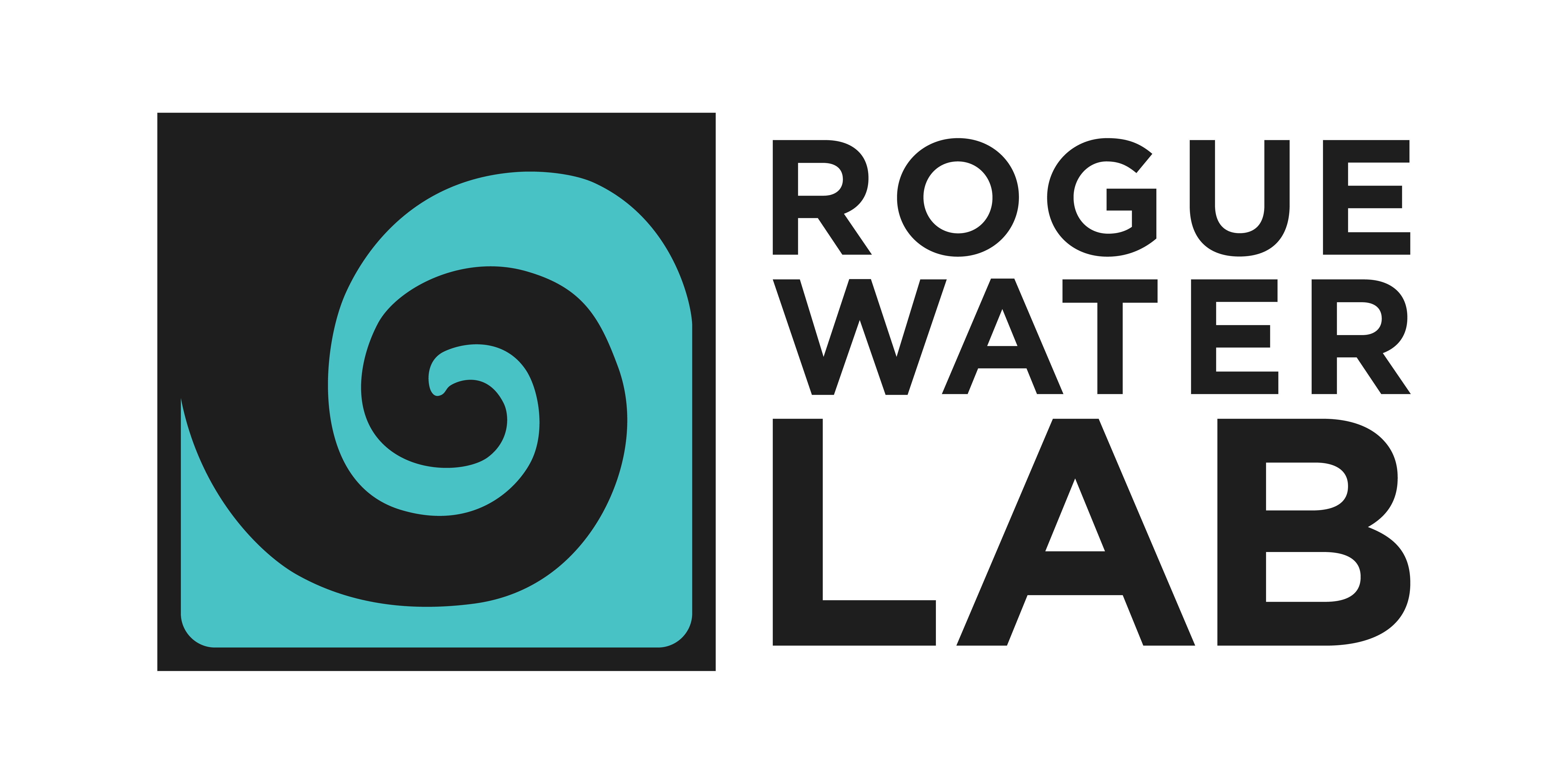
Rogue Water Lab
View ProjectRogue Water Lab
- Healthy Planet & People
- Resilient Communities
- Secure Natural Resources
-
Rogue Water Lab
The challenge:
Clean safe drinking water has been available for so long in the U.S that no one thinks twice about filling a glass of water from the kitchen sink or flushing the toilet. But the US municipal water sector is facing greater challenges than at any time in its history. Decades of under-investment have left a legacy of decaying infrastructure and an industry that is ill-equipped to meet environmental standards or prepare for growing water scarcity. The fundamental problem is that water is a capital-intensive industry and the combination of low user fees and public ownership has meant that it is difficult to attract the necessary capital to the sector. The bottom line is that we are not investing enough in our water infrastructure and neglecting this investment will have grave consequences in the future.
What can be done?
A significant number of the water industry’s challenges stem from a lack of communication. Funding shortfalls, failing infrastructure and water waste all necessitate skillful communication to secure buy-in and move solutions forward. However, few training and networking opportunities exist for communications staff at utilities. Local and national water associations host conferences, but they are technical, operator focused, and seldom cover communication challenges or strategies. Even where communications content does make the program, the cost of attending these conferences is a barrier to access. Public communication programs and conferences for formal city communication professionals, like public information officers, are available but can be expensive, and much of the content misses the mark for water professionals.
How Rogue Water Lab is meeting the challenge:
Rogue Water Lab is a hub for all things water communications that is digital, dynamic, widely accessible, and affordable, with tools and resources all geared towards behavior change through the lens of communication. These resources and opportunities for engagement are delivered in a variety of mediums and platforms, including events, podcasts, and video. Programs within Rogue Water Lab aim to revolutionize the water industry by changing how the industry tells its story. Programs include:
Catalyst Mastermind Summit – A 2.5-day program for water educators and communicators, Catalyst brings together thought leaders from both inside and outside of the industry to share perspectives and to dive deep into strategies that create more effective communication, outreach, and education. Catalyst is more than a conference, it’s an experience. Water nerds leave empowered with the ABCs of water communication – assessment, branding, content, and strategy – and inspired through tribal collaboration and storytelling.



Water in Real Life – The only podcast in the water sector dedicated to communication and the power of storytelling. It highlights stories and storytellers, from inside and outside the water industry, sharing their experiences, failures, and wisdom for being better communicators. Facts and figures alone do not inspire change. Stories are data with a soul and the emotional component mandatory to inspire action that moves the industry forward.



This project aligns with the following Sustainable Development Goals
-
-
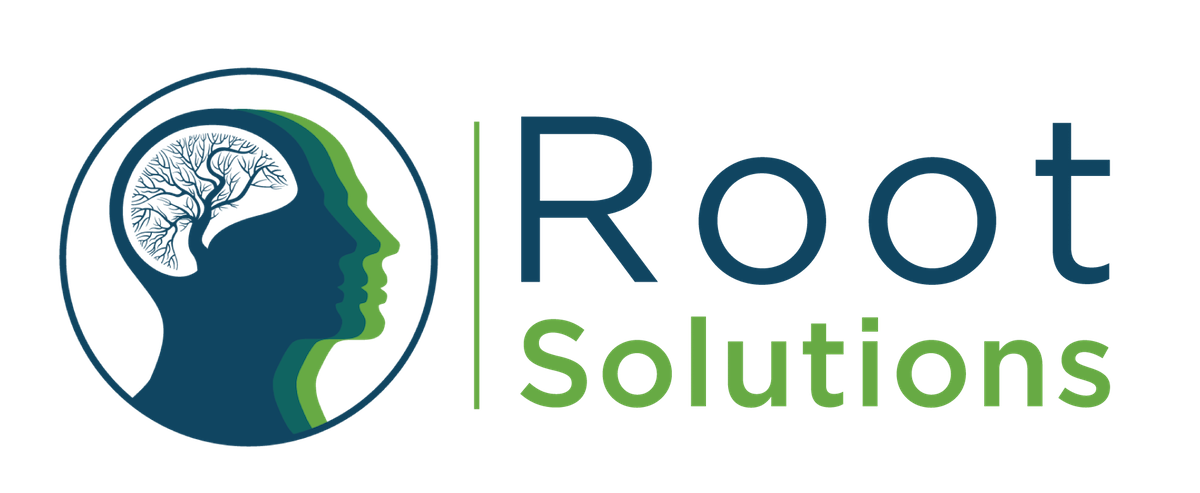
Root Solutions
View ProjectRoot Solutions
- Sustainable, Equitable Economies
- Healthy Planet & People
- Resilient Communities
- Secure Natural Resources
-
Root Solutions
The challenge:
The need for urgency in solving our most pressing environmental challenges is widely recognized; less recognized is the interconnectedness of behavior and positive environmental outcomes. Environmental problems are behavior problems. If we are to solve intractable and wicked problems in the environment, then large numbers of NGOs, foundations, agencies, businesses, and other entities must deepen their capacity to adaptively change the behavior of individuals and institutions on a large scale.
Many factors influence human behavior – from our beliefs, values, and mental models, to societal norms and expectations, to the built and legal environments. The interplay of these factors can hinder environmental action among even the most well-intentioned individuals and institutions.
The drivers of behavior are often not adequately understood or addressed. Yet this is the kind of expertise our world needs right now: an evidence-based understanding of audience barriers and motivators, and how to apply the right behavior change strategies at the right time to make environmental efforts more effective. Root Solutions is a thought leader in doing just this, working to build capacity for all change-makers to use these methods to create better systems and policies that accelerate environmental and social change.
What can be done?
Behavior-based tools help us work with institutional decision-makers to change practices, inform policies, and catalyze mental models that lead to virtuous feedback loops in systems. Organizations worldwide are creating significant positive social and environmental impact through simple, targeted interventions using behavior change techniques. And behavioral science doesn’t just deliver environmental wins – it often comes with an economic return on investment as well. For example, Virgin Atlantic adopted simple behavior change tools that led to a significant reduction in their emissions of greenhouse gasses and pollutants while simultaneously creating savings of over $5 million on fuel in just a matter of months. Just imagine, if an airline can see this impact by using just one behavior change tool, what could our world be like if all environmental changemakers employed behavior-based solutions?
How Root Solutions is meeting the challenge
Root Solutions is dedicated to building the capacity of the entire environmental movement to effectively change behavior to accelerate progress toward a more sustainable future.
Capacity Building
Drawing from design thinking, systems thinking, psychology, economics, and other social sciences, Root Solutions’ framework makes it easy for anyone to run a behavior change campaign from start to finish. They share these tools with institutions, NGOs, and public servants via trainings and their award-winning book “Making Shift Happen”.

The Book “Making Shift Happen”
- Making Shift Happen: This workshop-in-a-book, endorsed among experts like Steve McCormick and Bill McKibben, offers strategies and practical tips for creating, implementing, and scaling campaigns grounded in the science of how people think, make decisions, and act. Its focus on deep capacity building empowers individuals, organizations, and institutions to lead impactful campaigns that frequently yield a powerful return on investment. Authored by Nya Van Leuvan, Lauren Highleyman, Rod Fujita, and Ashleigh Kellerman, Making Shift Happen recently won a Gold Medal Nautilus Book Award alongside notable winners like Thích Nhất Hạnh, Barbara Kingsolver, Deepak Chopra, and Robin Wall Kimmerer.
- Training: Root Solutions has worked with practitioners from hundreds of organizations on how to create more effective programs and campaigns. Their hands-on training draws on the principles in Making Shift Happen to teach best practices for using behavior design to promote lasting, environmental behaviors. The interactive training goes beyond theory — participants learn practical strategies that they then apply to their areas of interest and take back to their communities. Click here to register your interest for upcoming trainings.
Design Solutions
Root Solutions has a strong track record of working with both private and public sector organizations, including non-profits, businesses, universities, and national and local government agencies. They work closely with clients and partners to identify behavioral leverage points in their initiatives, then assist in the design and implementation of cost-effective and scalable behavioral strategies. Using evidence-informed tools and processes, their partners have designed and executed effective behavior change campaigns, policies, and strategies.
They have applied their expertise to help environmental practitioners reduce single-use-plastics consumption, save water and energy, encourage sustainable transportation, reduce marine debris, prevent wildlife disturbance, achieve carbon neutrality in institutions, and promote sustainable food choices, among many more environmental victories. Root Solutions is partnered with Middlebury Institute of International Studies at Monterey where they have taught a graduate-level course in Environmental Behavior Change.
A few of their past clients include: NOAA, The Nature Conservancy, University of California, ClimateWorks Foundation, Climate and Land Use Alliance, AASHE (Association for the Advancement of Sustainability in Higher Education), NCEAS (National Center for Ecological Analysis and Synthesis), and the Contra Costa Transportation Authority.
This project aligns with the following Sustainable Development Goals
-
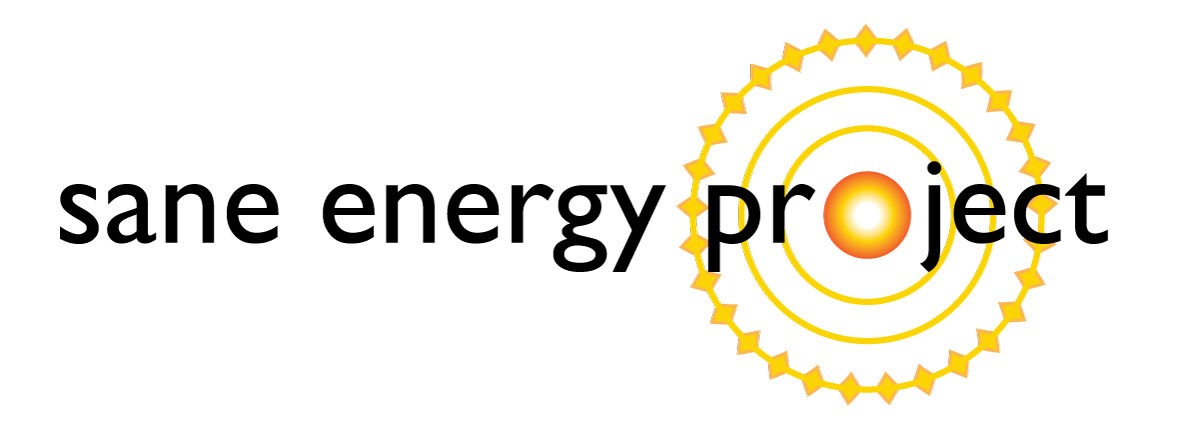
Sane Energy Project
View ProjectSane Energy Project
- Sustainable, Equitable Economies
- Healthy Planet & People
- Resilient Communities
- Secure Natural Resources
-
Sane Energy Project
The challenge:
According the United Nations 2018 report, we are dangerously close to irreversible tipping points for our planet that can only be avoided by a stark reduction in greenhouse gas emissions and a swift transition to clean energy. Yet, throughout the United States, policies and practices are still in place that allow coal and fracking to pose a grave threat to the environment, to public health, and to our climate.

What can be done?
For legislative changes to be made to eradicate fossil fuel consumption, a strong grassroots momentum needs to be established that calls for a rethinking of our energy system from the bottom up. By focusing, community by community, on efforts by impacted residents to stop the development of shale, gas, and coal infrastructure projects in their neighborhoods, we can work toward communities powered by 100% equitable and community-supported renewable energy sources.
How Sane Energy is meeting the challenge:
Sane Energy is focused on achieving a rapid and just transition in New York City and New York State to 100% renewable energy. Sane Energy’s signature style is modeled on local, community-driven, consensus-based organizing that encourages civic engagement, fosters mutual support among allied grassroots groups, helps build solidarity across geographic boundaries, and provides training and hands-on support for citizen engagement directly with policy makers on energy policy issues. Some of Sane Energy’s recent activities include:
- The Wind Not Williams Campaign – designed to halt the expansion of the Williams pipeline in New York City and support wind energy alternatives
- You Are Here Map – a powerful tool for local groups fighting fracking infrastructure projects to explain how their local battles fit into, and are affected by, the big picture of the gas industry’s buildout, as well as state and national policies
- Energy Democracy – providing communications leadership to the New York Energy Democracy Alliance to help convey complex narratives about our energy system
- Geothermal for New York State – working with local legislators and community leaders to encourage NYSERDA to include a geothermal solution for the Empire State Microgrid
This project aligns with the following Sustainable Development Goals
-
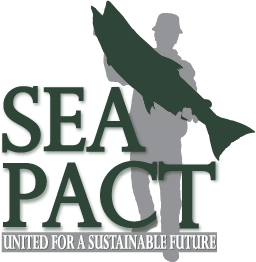
Sea Pact
View ProjectSea Pact
- Sustainable, Equitable Economies
- Healthy Planet & People
- Resilient Communities
- Secure Natural Resources
-
Sea Pact
The Challenge: Billions of people across the globe enjoy fish and seafood. Yet our ocean resources are limited. Collectively, we are taking more from our waters than can be replaced. This has serious impacts. Populations of marine species have more than halved in the last 50 years, and 90 percent of global fish stocks are overfished or fished to their ecological limit. As the global population and the demand for seafood grows, it will only become more difficult for communities around the world to have access to seafood.
What Can Be Done: Sustainable seafood appears to be a rising trend among chain restaurants, retailers, distributors and wholesalers who each see significant growth in the percentage of their seafood that will be sustainable in the coming years. Increasingly, these sectors are more open to dialogue and are interested in obtaining information that can help them make informed and responsible choices for themselves, their customers and the ocean. Some within this supply chain are uniquely positioned to affect change, both below and above them. These distributors and importers sit firmly at the center of the industry and, by working collectively, are poised to make positive change across the whole seafood industry.
How Sea Pact is meeting the challenge: Sea Pact is an innovative alliance of eleven leading North American seafood businesses, who have joined together and are using their collective power to lead and drive improvement throughout the global seafood supply chain. This innovative model of pre-competitive collaboration, focuses on the long-term viability of a product over the scarcity of sales of that product. Essentially, without assured supply of seafood to sell there will be no consumers to compete for. This cost-competitive strategy is an effective way to ensure needed access to seafood supplies while being responsible stewards of the resource. Together, these businesses can create an economy of scale, learn from each other, and create concrete positive outcomes. Sea Pact strives to advance environmentally sustainable fisheries and aquaculture practices and provide the building blocks for a long term and sustainable seafood industry.
This project aligns with the following Sustainable Development Goals
-
-
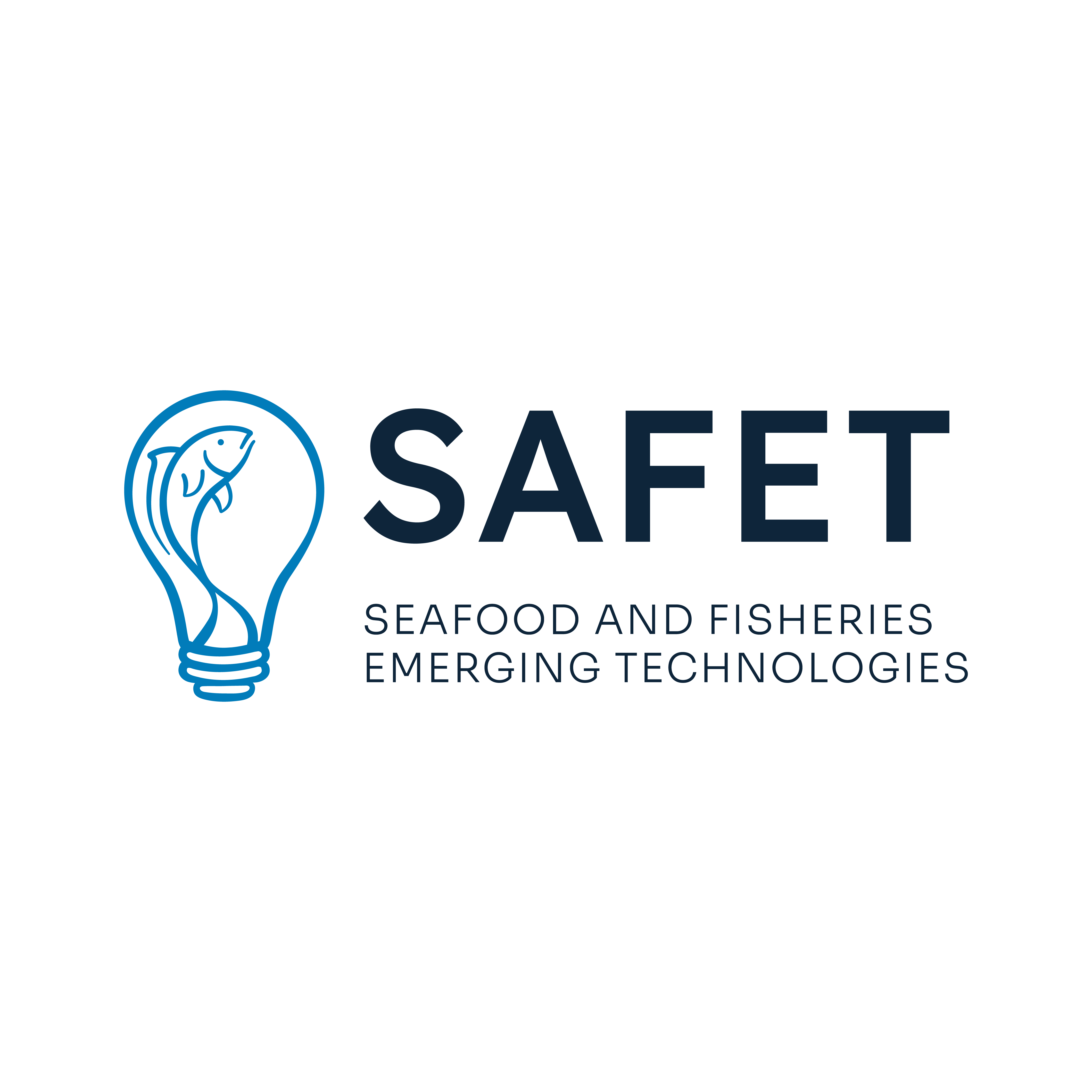
Seafood and Fisheries Emerging Technologies
View ProjectSeafood and Fisheries Emerging Technologies
- Healthy Planet & People
- Secure Natural Resources
-

Service Area
Global-
Website
-
Contact this Project
Seafood and Fisheries Emerging Technologies
The Challenge: Seafood and fisheries are vital to the livelihoods of billions of people around the globe and to the health of our global population. However, they face many problems that threaten marine life, the environment, and the economy. Bycatch, overfishing, and illegal, unreported and unregulated fishing threaten the sustainability of fisheries and the livelihood of fishers. Ensuring appropriate governance and monitoring of fisheries is a critical step to safeguard the future of fisheries and the communities that depend on them.
What Can Be Done: Technology is a key lever that can improve fishery outcomes. Although technology by itself cannot solve the global fishing crisis, it can be a catalytic element for the transformation of fisheries practices and policies. Under a sustainable approach, technological innovations offer an opportunity to improve fisheries management practices and seafood business, while empowering fishers and providing more information to consumers so that they can make more responsible seafood choices.
How Seafood and Fisheries Emerging Technologies (SAFET) is Meeting the Challenge: SAFET brings together a global network of industry leaders, innovators, developers, and technology implementers that are committed to addressing the biggest challenges in the seafood and fisheries world. Emerging technologies can play a key role in addressing issues such as environmental sustainability, social responsibility, provenance, equity, and economic viability. SAFET is the central convening force in the fisheries and seafood technology space, one which better connects technology providers with implementers, increases the flow of information between developers and stakeholders, enables adoption and scale, does these things actively, and one that is truly global in scope. SAFET’s mission is to realize the full potential of emerging technologies that ensure the sustainability and resilience of fisheries and the communities that depend on them, globally.
This project aligns with the following Sustainable Development Goals
-
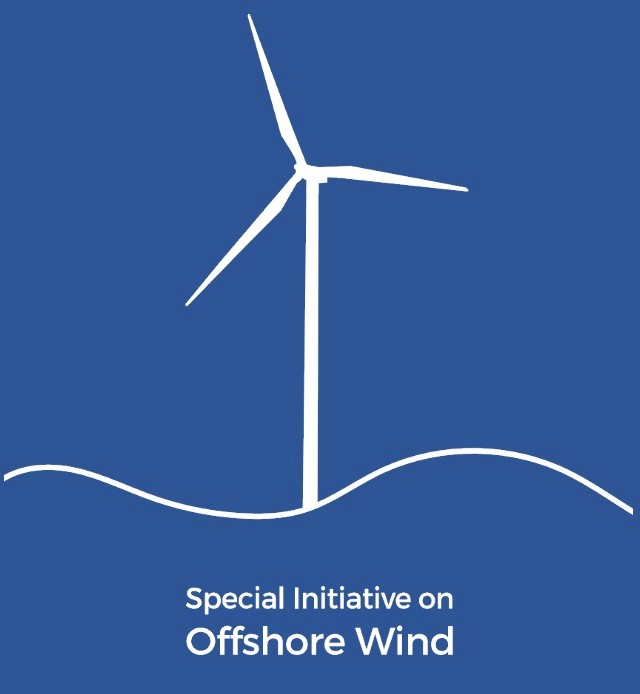
Special Initiative on Offshore Wind
View ProjectSpecial Initiative on Offshore Wind
- Sustainable, Equitable Economies
- Healthy Planet & People
- Resilient Communities
- Secure Natural Resources
-

Service Area
United States-
Website
Special Initiative on Offshore Wind
The Challenge: Offshore wind is one of the most powerful potential carbon-reducing energy sources. Wide deployment of offshore wind in the U.S. can revitalize coastal industry and ports, reduce pollution, and create tens of thousands of jobs — as it has done in Europe and China.
What Can Be Done: The Biden Administration has set a bold goal of deploying 30 gigawatts (GW) of offshore wind by 2030, enough to power 10 million homes with clean energy, create 77,000 jobs, and spur private investment up and down the supply chain. Meeting this goal will capture the potential to power millions of homes and businesses, grow new manufacturing and maritime industries, and tackle the climate crisis. However, for offshore wind to be deployed in the U.S., there are various challenges that must be addressed, from a variety of stakeholder groups.
How the Special Initiative on Offshore Wind (SIOW) is meeting the challenge: SIOW provides objective, strategic guidance on key issues in the offshore wind sector. SIOW uses fact-based research and multi-sector collaboration to provide expertise, analysis, information sharing, and strategic partnership with industry, advocacy, and government stakeholders to build understanding and drive the sustainable and responsible deployment of offshore wind.
Guided by an advisory committee of diverse interests, including representation from offshore wind developers, NGOs, and state policy makers, SIOW addresses key technical and stakeholder issues observed in the industry by providing solutions-oriented solutions to pressing issues. Our work includes roadmaps for reducing the cost of offshore wind in state procurement processes, analysis and forecast of supply chain benefits from the development of offshore wind, and multi-sector convenings to support collaborative process design for solving complex issues.
This project aligns with the following Sustainable Development Goals
-

Turn Forward
View ProjectTurn Forward
- Sustainable, Equitable Economies
- Healthy Planet & People
- Resilient Communities
- Secure Natural Resources
-
Turn Forward
The challenge: Offshore wind power is a once-in-a-lifetime opportunity—a unique renewable resource with game-changing potential to increase clean, domestic energy production over the next decade. While there are thousands of offshore wind turbines spinning around the world, only 7 are currently installed in US waters. In order to meet clean energy mandates and achieve a net-zero future, large scale offshore wind development will be needed. The acceleration of offshore wind power, however, must occur in ways that can secure and maintain durable public support over decades.
What can be done: Turn Forward believes that, by 2025, the federal government and states should be actively pursuing the generation of 100+ gigawatts (GWs) of offshore wind power with strong policies in place to maximize local benefits and ensure environmental protections. Establishing this solid foundation is essential for ensuring a successful trajectory for this critically needed new clean energy industry in the U.S.
How Turn Forward is meeting the challenge: Turn Forward is a new, independent, non-profit organization dedicated to advancing an ambitious vision for American offshore wind power at this pivotal moment. Turn Forward aims to increase momentum for policies and projects that significantly expand offshore wind power with the worker, community and environmental outcomes needed to secure and maintain broad-based support as the industry matures in the US. Working collaboratively with allied, diverse partners, Turn Forward will: advocate for a proactive policy agenda; amplify the ways in which offshore wind policies and projects are creating tangible benefits; support federal and state leaders committed to advancing offshore wind power in a manner that delivers benefits and environmental protections; create durable public support for American offshore wind power needed to achieve 100+ GW and beyond.
This project aligns with the following Sustainable Development Goals
-
-
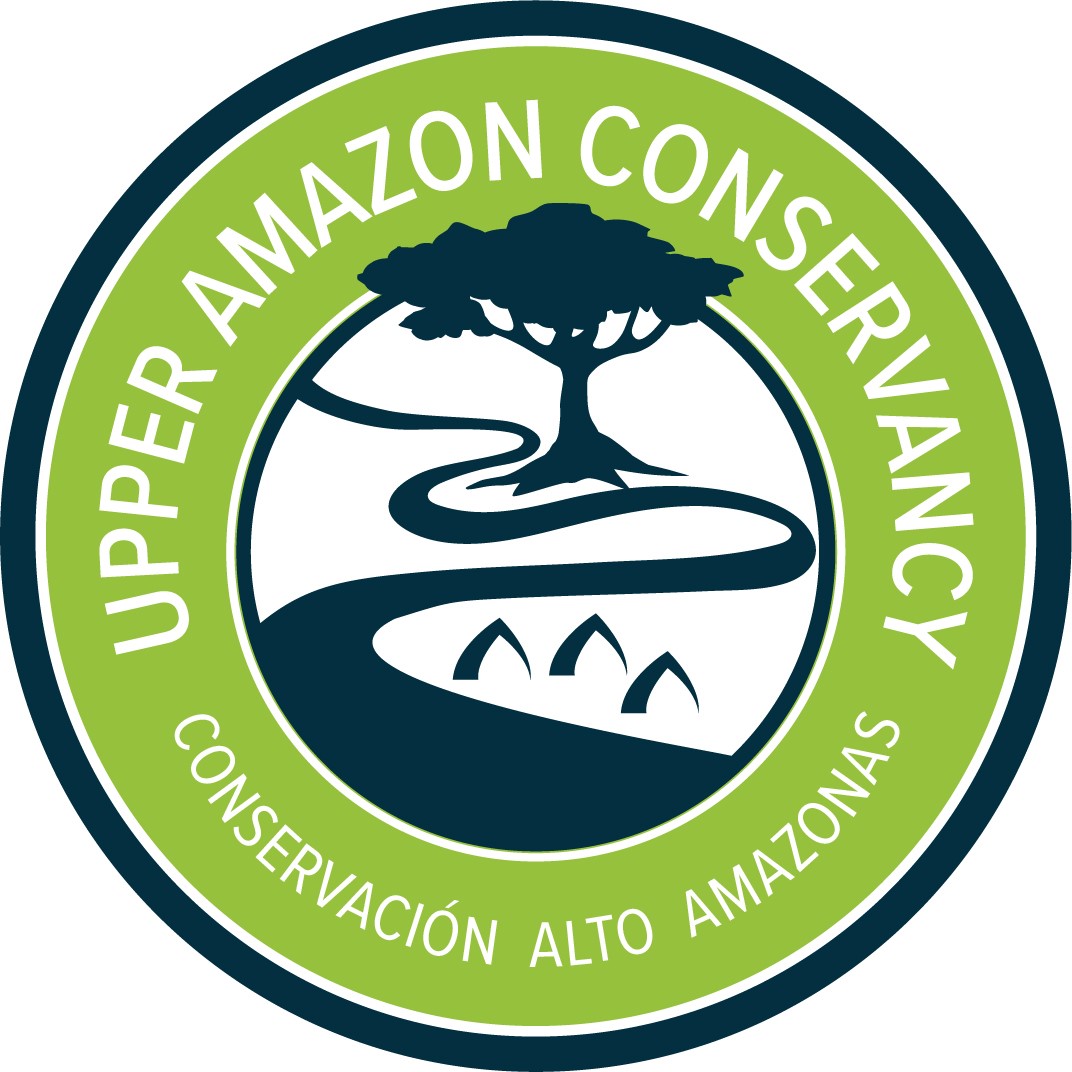
Upper Amazon Conservancy
View ProjectUpper Amazon Conservancy
- Sustainable, Equitable Economies
- Healthy Planet & People
- Resilient Communities
- Secure Natural Resources
-
Upper Amazon Conservancy
The challenge:
The Peruvian Amazon ranges from east of the Andean mountains to Peru’s borders with Ecuador, Colombia, Brazil, and Bolivia. It encompasses about 60% of the country and it one of the most biologically diverse areas of our planet. Yet, within the rainforest’s Alto Purús headwaters, there is a conservation and human rights crisis. Because of its remoteness, illegal activities including poaching endangered species, logging, and community exploitation often go undetected, threatening the few remaining isolated indigenous tribes who have lived symbiotically within the network of rivers and forests and made the Alto Purús-Manu Mosaic their home for centuries. Many members of the tribes are descendants of those who fled other areas to avoid devastating epidemics as industrialization made its way to Peru a century ago. However, contact with both well-meaning missionaries and outsiders seeking to exploit their land still resulted in more violence and disease. Continuing to live in isolation is, in the view of the tribes who live here, essential for survival.

What can be done?
The future of this remarkable region ultimately depends on the success of local indigenous communities as protectors and stewards of the ecosystem in which they live. Protected areas can be created and strengthened to prevent illegal activities, protect isolated tribes, mitigate climate change, and maintain ecosystem health. Local communities can be empowered to benefit from conservation and sustainable resource use, while still preserving their culture and traditions.
How Upper Amazon Conservancy is meeting the challenge:
Upper Amazon Conservancy has 25 years of experience working in the region, successfully developing trust-based relationships with indigenous tribes in the most vulnerable areas, where illegal activities and community exploitation often go undetected. Engaging local people as key participants in all activities, Upper Amazon Conservancy focuses on preparing community members to engage in and benefit from conservation activities as a means to protect their lands and strengthen adjacent protected areas. Successes include:
- Leading several indigenous land title efforts, including helping deliver title to the Ashéninka community of Saweto in 2015, the first indigenous community to be titled in the department of Ucayali in the previous decade. Most recently, Upper Amazon Conservancy supported the successful titling of three Asháninka communities in the Yurua region totaling 169,000 acres.
- In 2016, helping create the La Novia Alliance, the region’s first every conservation partnership between indigenous tribes and mestizos, which is designed to promote sustainable resources use in the La Novia River watershed, a threatened tribute of the Alto Purús.
- In October 2018, authoring a feature story in National Geographic that tells the story of threats to indigenous tribes living in isolation in the Amazon headwaters.
- In December 2019, helping indigenous tribes document the invasion of coca farmers in their traditional lands and raising awareness by authoring an article on Mongabay.com.
- In 2020, providing 160 indigenous families with emergency food, medicines and cleaning supplies during the COVID-19 pandemic.
This project aligns with the following Sustainable Development Goals
-
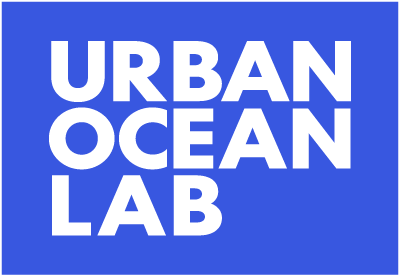
Urban Ocean Lab
View ProjectUrban Ocean Lab
- Sustainable, Equitable Economies
- Healthy Planet & People
- Resilient Communities
- Secure Natural Resources
-
Urban Ocean Lab
The Challenge:
Climate change is causing sea level to rise, putting our safety, economies, food security, and communities at risk. Globally, due to burning fossil fuels, average sea level has risen 11 to 16 centimeters since 1900. Even with immediate and dramatic reductions in carbon emissions, sea level is projected to rise up to two meters by 2100. Approximately 32% of Americans live in coastal cities and we are unprepared for oncoming rising seas and storms. Over time, rising seas, storm surges, and floods will lead to considerable loss of life and billions of dollars of damage, which will disproportionately impact historically-disadvantaged communities.
What can be done:
While coastal cities have implemented a variety of resilience and adaptation strategies, no overarching framework or entity exists for 1) identifying best practices, 2) assessing and monitoring the efficacy of policies implemented, and 3) screening decisions to ensure they are grounded in climate justice. The development of rigorous, creative, equitable, and practical policy proposals could provide a massive benefit for lives and livelihoods, for economies and ecosystems, and for climate justice.
How Urban Ocean Lab is meeting the challenge:
As a policy think tank, Urban Ocean Lab seeks to change the rules of the game, designing a “Blue New Deal” policy framework—an ocean climate action plan—for coastal cities. Urban Ocean Lab will compile, evaluate, and develop policies and practices that enable coastal cities to adapt to a climate-changed future while attending to the needs of communities at the greatest risk. Additionally, they will develop recommendations for city-level actions to include the ocean more fully in climate policy. Model policies and best practices for restoring coastal ecosystems, managing sea level rise, scaling offshore renewable energy, building resilient infrastructure, and educating communities about coastal resilience will be gathered and refined from case studies of coastal cities around the world. Urban Ocean Lab will work with committed city governments, scientists, policy makers, designers, and community organizations to develop a community of practice for coastal cities in the U.S. working toward climate justice for all residents. Urban Ocean Lab’s highly collaborative process will result in a community of leaders who embrace and implement these approaches to advance climate-ready coastal cities.
This project aligns with the following Sustainable Development Goals
-
-
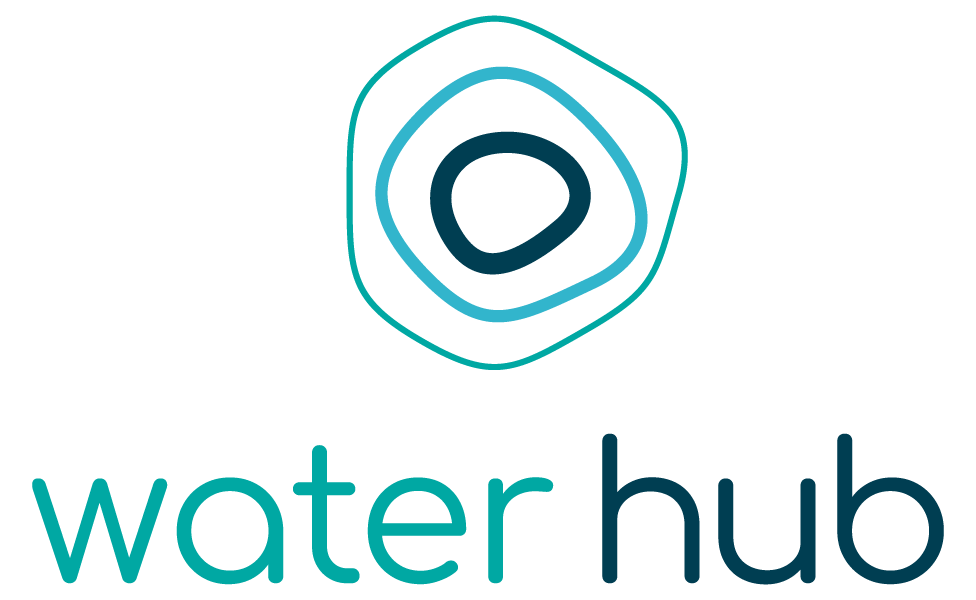
Water Hub
View ProjectWater Hub
- Healthy Planet & People
- Resilient Communities
- Secure Natural Resources
-
Water Hub
The Challenge:
Millions across the United States experience living with dry wells, toxic taps, flooding, sewage spills, and water shutoffs disproportionately impacting Black, Indigenous, and People of Color due to historic infrastructure disinvestment and environmental racism. These challenges are deeply rooted in social and political structures, resulting from treating water as a commodity and rivers as mere plumbing systems.
Limited communications capacity can be a barrier because it results in water news that is dry and technical. People tune out content that doesn’t reflect their voices or values, and therefore don’t engage in water issues impacting their communities. Without public pressure, decision-makers often defer costly or controversial investments.
What Can Be Done:
We have to shift how we relate to water and each other. It starts by bringing more people into the water movement
We believe:
- The nation’s water problems are fixable if we can build the political will.
- People care about water but could benefit from clearer communications.
- Public awareness and engagement will lead to better water management.
- A more equitable and inclusive water movement will be more effective.
- Stories shape systems. We have to shift the narrative and power map to change policies.
- Narrative change is a long-term undertaking that requires organizing, strategic communications, arts, and cultural work.
How Water Hub is Meeting the Challenge:
We are a pro bono communications organization that uses story-based strategies to advance water justice and resilience across the country to make water communications more accessible, and activism more effective, so the people most impacted by water challenges have greater agency to determine the solutions.
Our communications support includes writing, news pitching, strategic messaging, coaching, media research, digital strategy, design, and campaign planning. In addition to the on-call help we provide to advocates, we work on long-term narrative change through arts and culture collaborations and creative storytelling and campaigns.
Giving voice and visibility to Tribes, communities of color, and other underrepresented groups is a core focus. For example, our Color of Water directory features over 100 water experts of color working across the United States and honors traditional ecological knowledge alongside academic expertise to amplify community stories and solutions in the media.
We imagine a world where all people have equitable access to safe water and sanitation, as well as a voice in the management of this shared and sacred resource. We envision living rivers, thriving communities, and water systems that work with nature.
This project aligns with the following Sustainable Development Goals
-
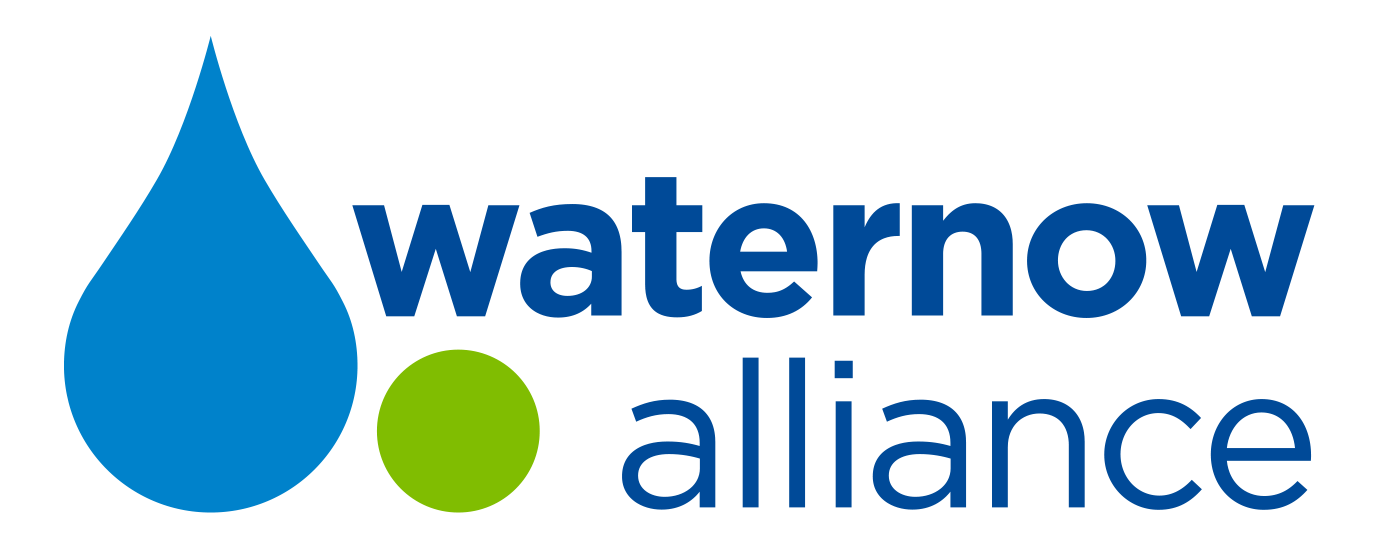
WaterNow Alliance
View ProjectWaterNow Alliance
- Sustainable, Equitable Economies
- Healthy Planet & People
- Resilient Communities
- Secure Natural Resources
-
WaterNow Alliance
The challenge:
Essential for all life and survival on this planet, water is one of our most precious resources and is vital for human needs, both in our natural and built environments. Across the globe, we are facing more frequent and severe droughts, increased fire risk, decreased snowpack, and escalating pressure on the natural systems that generate water supply for our communities. A recently released joint report by the United Nations and the World Bank estimates that 40 percent of the world’s population is affected by water scarcity, placing food security, energy sustainability, and public health at risk.

What can be done?
We can achieve water security, and ecological integrity, by investing in and growing sustainable approaches, rather than falling into crisis-driven decision making. In the United States, local decision makers hold the keys to our water future. At least 85% of water infrastructure spending occurs at the community level, and 87% of people nationwide are served by public water utilities. While Federal and State agencies have a vital role – the policies, strategies and priorities established by local leaders have the power to fundamentally shift how we think about and use water. By treating all water in communities – drinking water, stormwater, wastewater – as part of a unified and integrated system (“One Water”), we can design methods of providing water to urban areas with using up or destroying water resources, while also anticipating and preparing for the need to adapt and have a mechanism to respond to changing conditions.
How WaterNow Alliance is meeting the challenge:
WaterNow Alliance brings a clear path to action to fix our water infrastructure. WaterNow Alliance is a forum for local water leaders in the U.S. who want to champion sustainable, affordable and climate resilient water strategies. Working with businesses, community leaders, and water and finance experts, WaterNow Alliance advances innovation, breaks down barriers, and drives change. WaterNow Alliance strategies include:
- Engaging WaterNow’s network of decision-makers and connecting them to ideas, resources and one another.
- Championing a sustainable water future by eliminating barriers and advancing solutions through policy change.
- Demonstrating success by showcasing strategies that work and that communities can replicate and scale.
This project aligns with the following Sustainable Development Goals
-
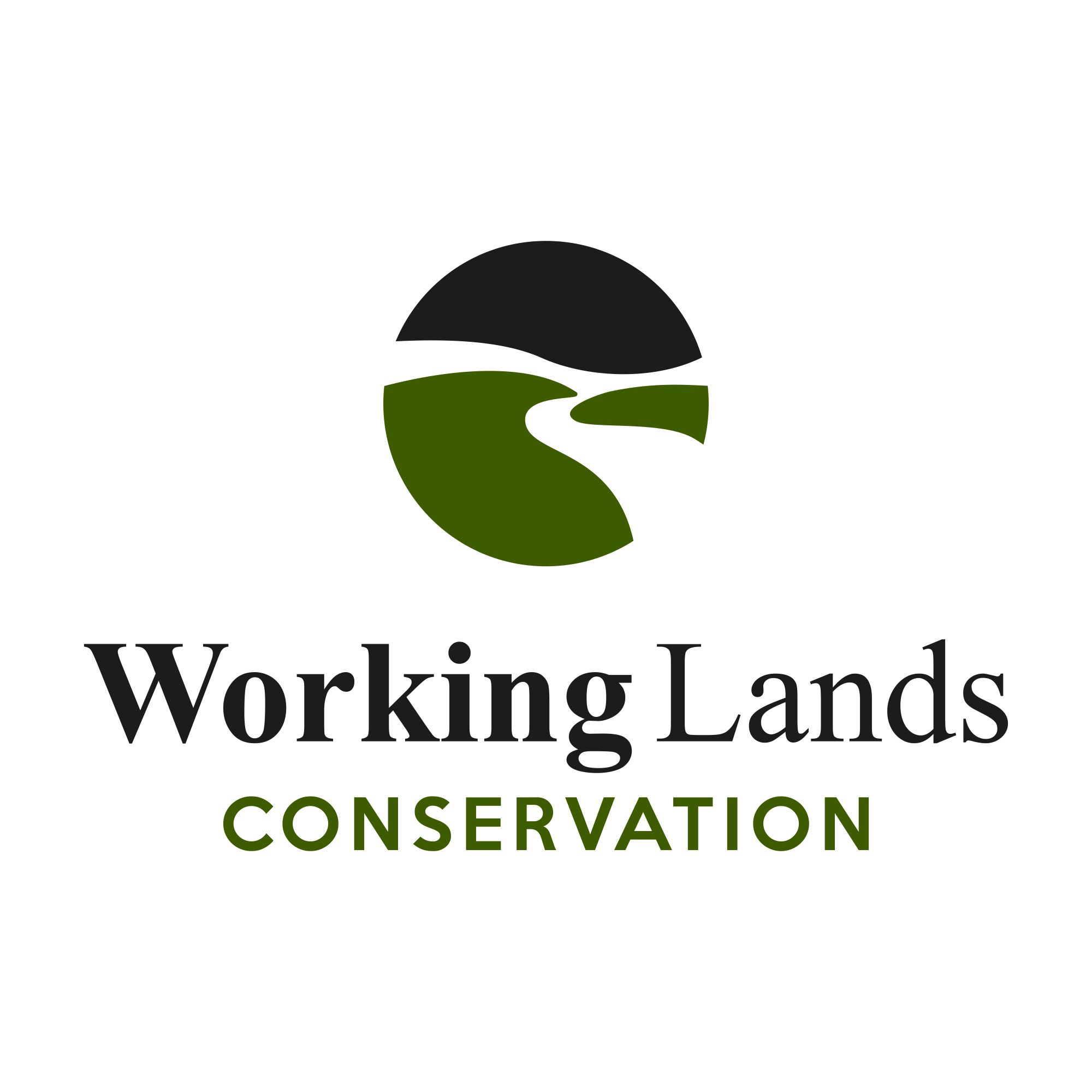
Working Lands Conservation
View ProjectWorking Lands Conservation
- Sustainable, Equitable Economies
- Healthy Planet & People
- Resilient Communities
- Secure Natural Resources
-
Working Lands Conservation
The challenge:
Working lands are the rangelands, farms and forestlands used to support livelihoods. Their value, however, extends beyond a dollar amount. Working lands are also recognized as homes to wildlife, areas that protect open space, and landscapes that provide local people with a sense of place. These extra conservation values are growing in importance as the wildlands that are traditionally seen as harboring these values are increasingly threatened and fragmented by expanding human activities. Because of this, working lands are valued not only by the people who earn their livelihoods from the land, but also from a broader society who recognize the value of working landscapes to protect nature.
Because working lands are valued by many different stakeholders, people are often divided about how these areas should be managed. For example, in Northern Utah, where Working Lands Conservation currently focuses its work, cattle grazing is common on many public lands. In addition, these landscapes serve as key habitat for species of ecological and political interest, like the greater sage-grouse, and are relied upon for recreation and clean water. This dynamic creates tension between ranchers, conservationists and government agencies who all have distinct interests, organizational cultures, and operational constraints. Ultimately, such tension and division blocks development of innovative and effective management strategies for working lands by preventing stakeholders from advancing common objectives, sharing knowledge, and leveraging resources.
What can be done?
With an ever-growing population, maintaining diverse ecosystems on the working lands that support both nature and human livelihoods is vital. Well managed working lands provide interconnected landscapes where nature and local communities can thrive. A key element to conserving these areas is building partnerships and creating a shared management vision among the diverse groups that manage and care for working lands. Partnerships that develop trust between ranchers, private and public land managers, and scientists are key. Once trust is developed, partners can start to understand each other’s values, needs, resources, and goals. This is when innovative solutions start to emerge and lasting solutions are formed.
How Working Lands Conservation is meeting the challenge:
Working Lands Conservation works to balance human-use of working lands with conservation objectives by bringing science to collaborative partnerships. Working Lands Conservation works in partnership with stakeholders to identify gaps in scientific knowledge, and then develop research that fills these gaps. Working Lands Conservation then works with partners to test unique management solutions on working lands that lead to durable working lands management that benefits nature. While the work is research based it also involves building deep collaborations and relationships with the stakeholders who have the most interest in the land. These relationships allow for easy flow of ideas that help better inform the research and, ultimately, as in Working Lands Conservation’s current Utah projects, improve sage-grouse habitat, water quality and relationships among working lands stakeholders.
This project aligns with the following Sustainable Development Goals
-
Want to make a donation to one of our amazing projects?
Here’s how:
Because our projects are part of Multiplier, they are all able to receive charitable donations and grants available only to tax-exempt organizations. However, each project retains responsibility for their own strategy, vision, and fundraising.
Your financial contributions are very much needed to help them carry out their vision. Our Federal Tax ID: 91-2166435.
To contribute by credit card, select the project you’d like to donate to, and click on the ‘Donate’ button on the left side.
Other Ways to Donate
Wire Transfer or Stock Donation: If you plan to donate stock or make a donation via wire transfer, please contact Carolyn Schour, our finance director, by phone at 415-458-3617 or email us for further instructions.
Donating by Check: Please make your check payable to Multiplier. Be sure to write the name of the project that you wish to support on your check’s memo line or in attached correspondence; do not make your check payable directly to the project. Mail your check to:
Multiplier
548 Market St
PMB 81178 (must be included)
San Francisco, CA 94104-5401
NOTE: If sending via FedEx, please contact us (415-458-3617 or email) for special mailing instructions.

























